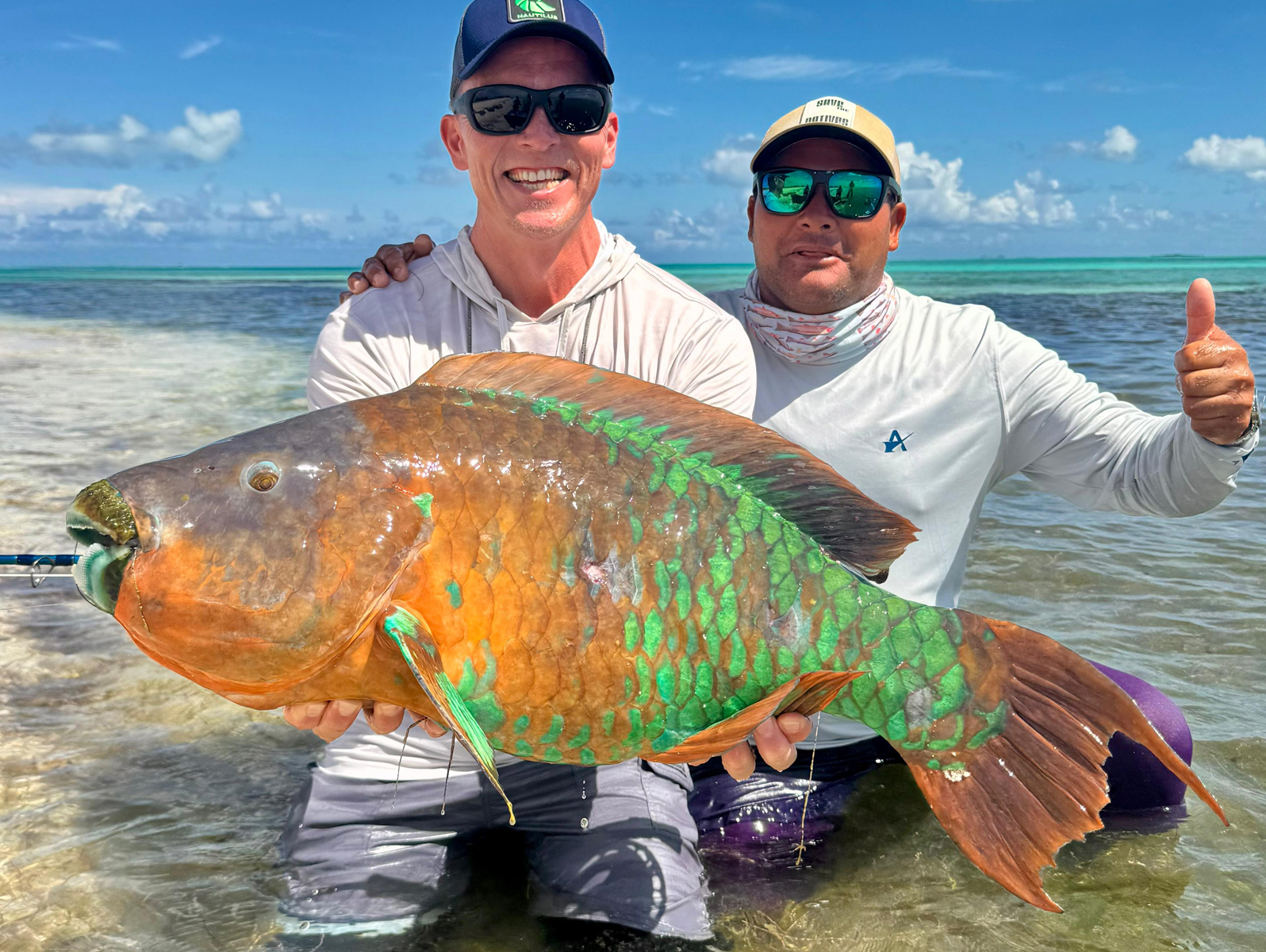
11 minute read
LOS ROQUES: The Saltwater Fly Fishing Paradise Where Dreams Begin
LOS ROQUES: The Saltwater Fly Fishing Paradise Where Dreams Begin
Though I’ve cast flies across the globe and even run saltwater fly fishing operations in some of the most remote corners of the world, when I picture the ideal saltwater destination, one place instantly rises above the rest: Los Roques. This Venezuelan archipelago is not just beautiful—it’s a fully immersive fishing experience that combines unspoiled nature, a wide variety of species, and a level of access and comfort that’s increasingly rare in the saltwater fly fishing world. Whether you’re chasing your first bonefish or stalking the elusive midnight parrotfish no one has ever landed, Los Roques offers something truly exceptional: a fishery where both novices and seasoned anglers find themselves equally challenged, equally rewarded, and completely hooked.
BY NICOLA VITALI - https://www.instagram.com/nicolavitali_fishing/
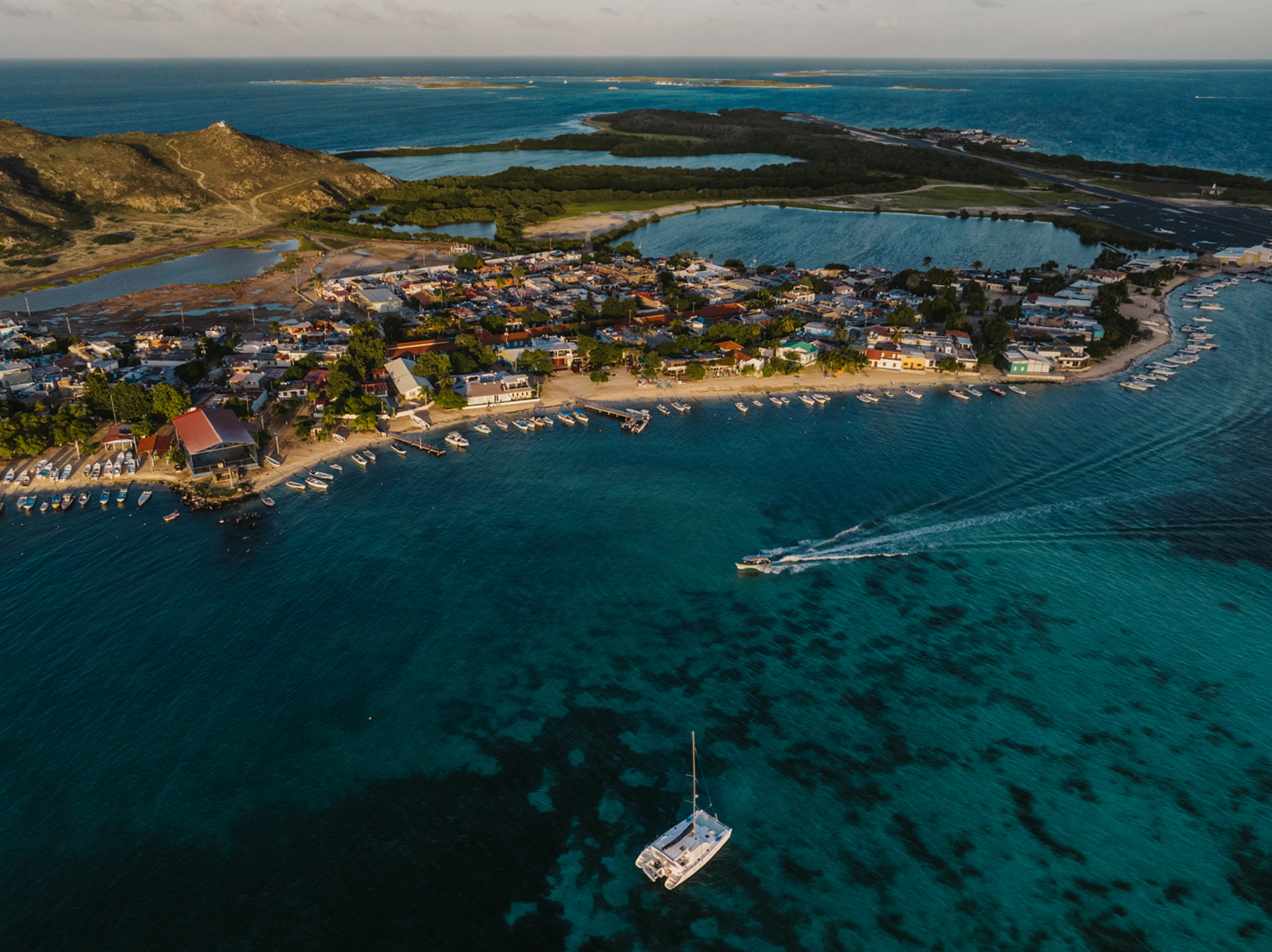
Although I have fished in many places around the world, including running a few saltwater fly fishing operations, if I had to name the ultimate saltwater fly fishing destination, my first thought would be Los Roques. This may come as a surprise to those who are familiar with the legendary fisheries of the Seychelles, the Bahamas, or the Indian Ocean.
But Los Roques, with its rare combination of untouched beauty, diversity of species, accessibility, and affordability, stands in a class of its own.
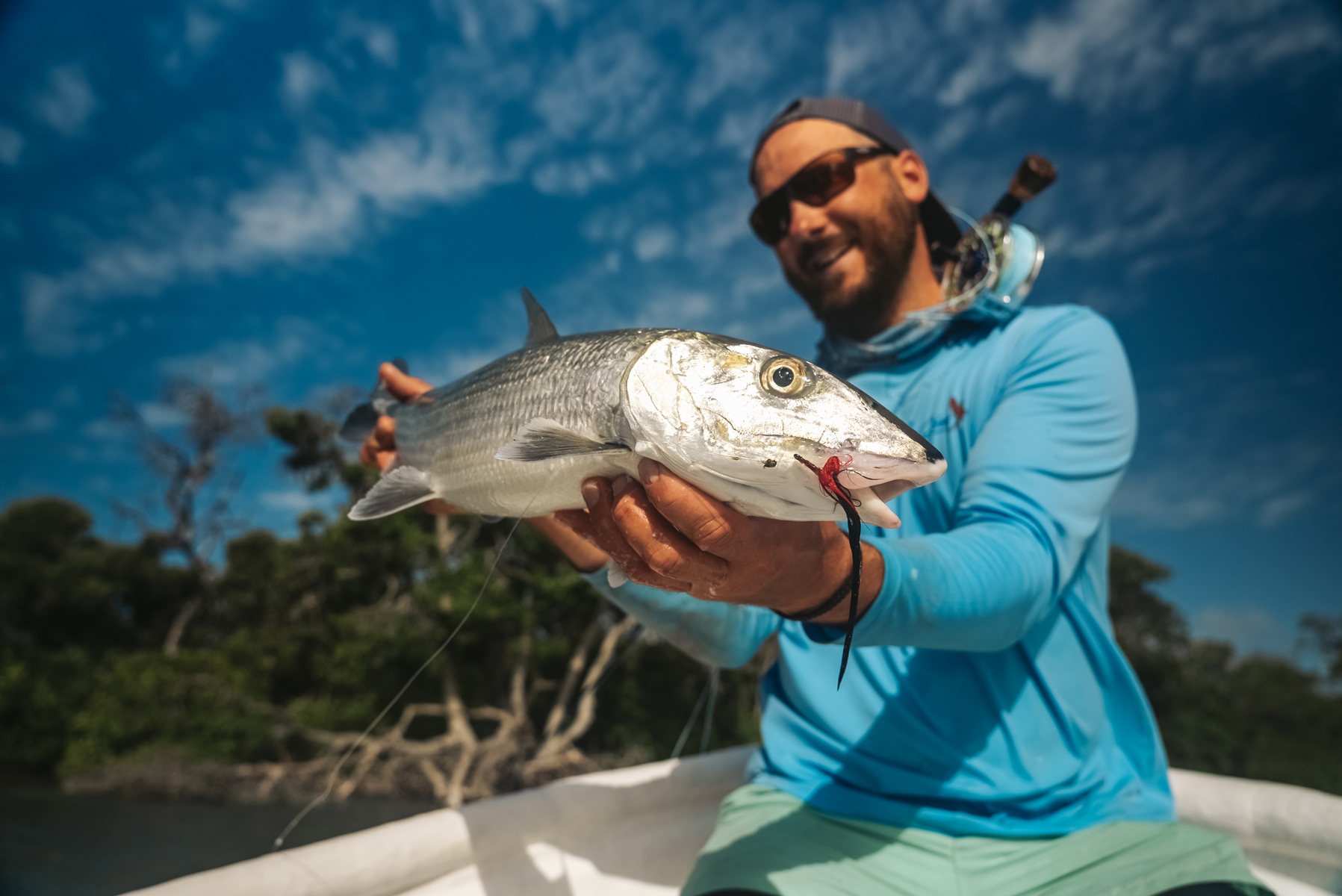
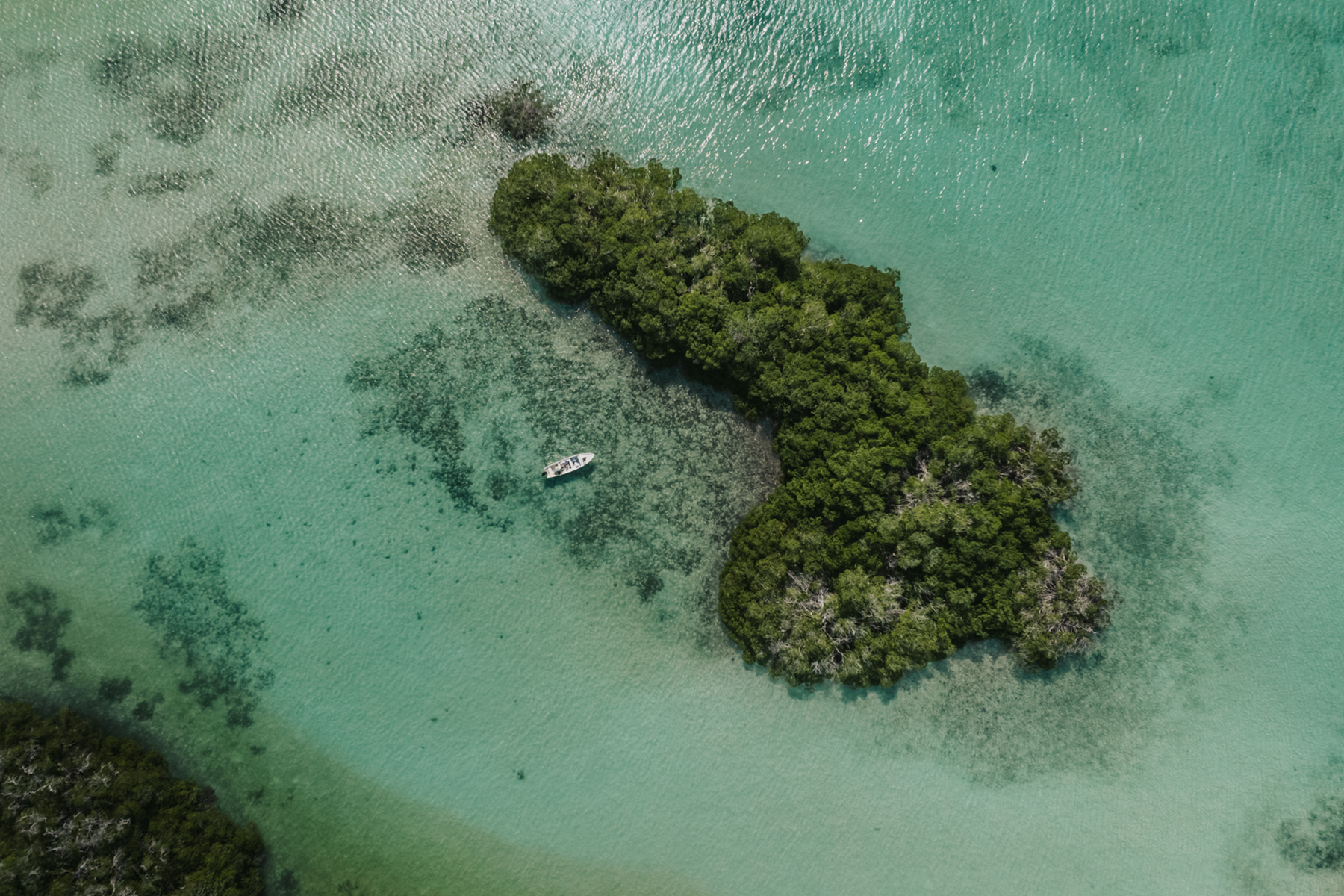
Whether you’re chasing your first bonefish or stalking the elusive midnight parrotfish no one has ever landed, Los Roques offers something truly exceptional
Let me be clear from the outset: I’m speaking broadly about general saltwater fly fishing here. I’m not going to break things down into regions or fisheries too much. The Atlantic is a completely different story from the Indian Ocean, which I find endlessly intriguing, yet often more complex and far more expensive. In contrast, Los Roques offers an experience that is immersive, rich, and satisfying for anglers of all levels—without breaking the bank.
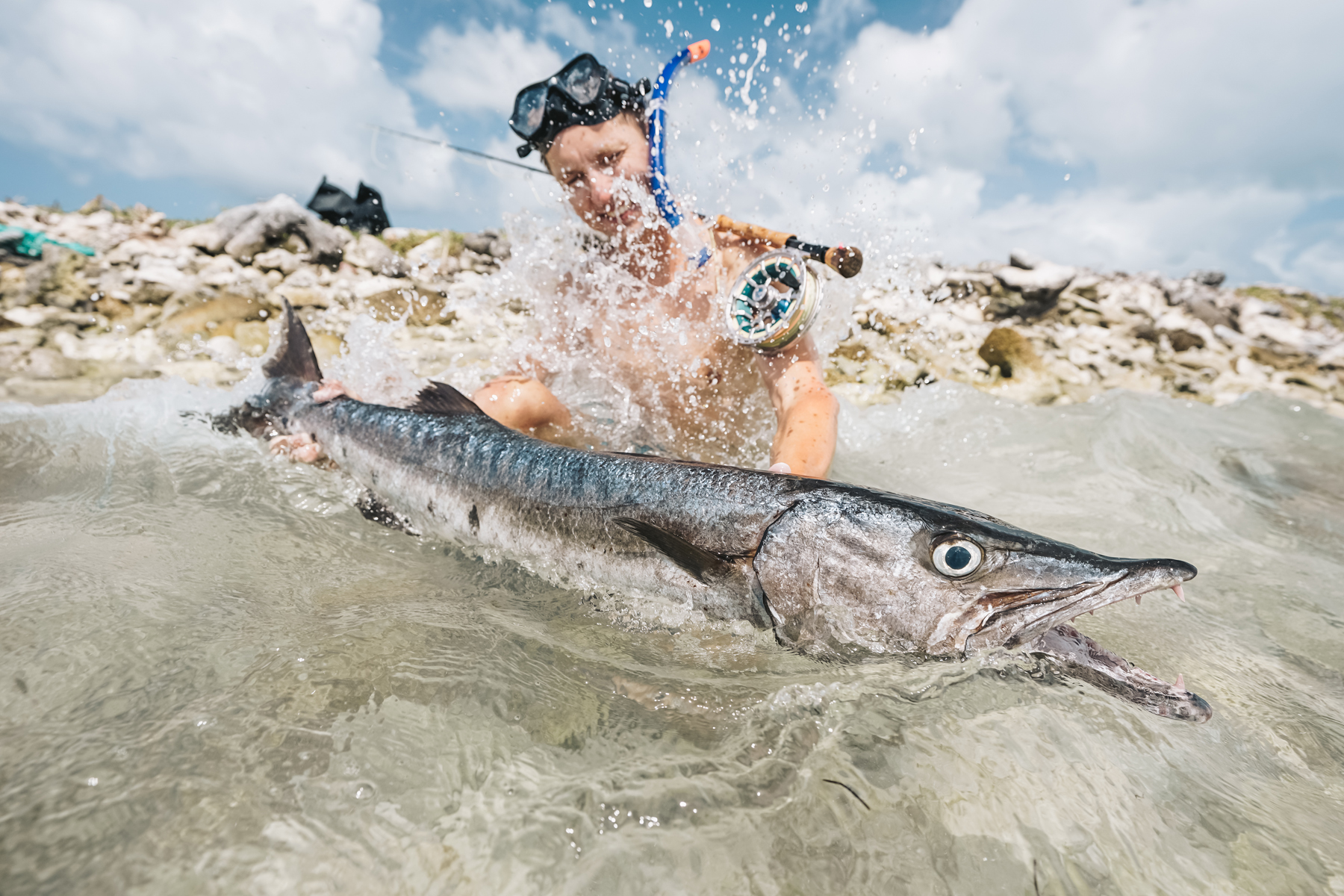
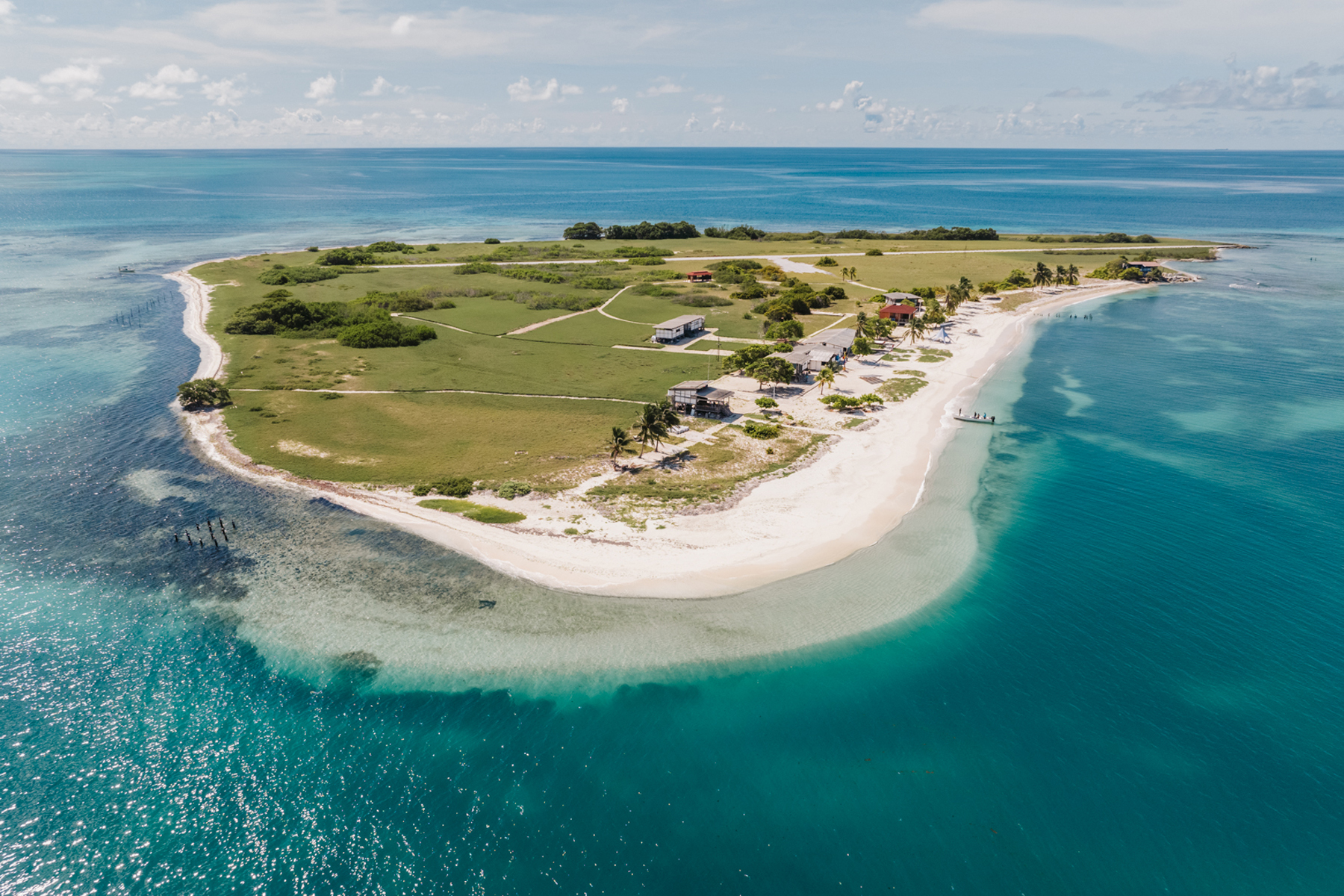
So, what makes Los Roques so unique and compelling? For starters, it has been a protected national park since the 1970s. This has spared it from the overfishing and aggressive development that has affected so many tropical destinations. Unlike the Maldives, where overbuilding and heavy tourism are beginning to degrade the natural environment, Los Roques remains pristine. The reefs are healthy, the flats are alive, and the pressure on the fishery is still relatively low. In today’s world, that’s an increasingly rare combination.
It’s the fishing that truly sets Los Roques apart
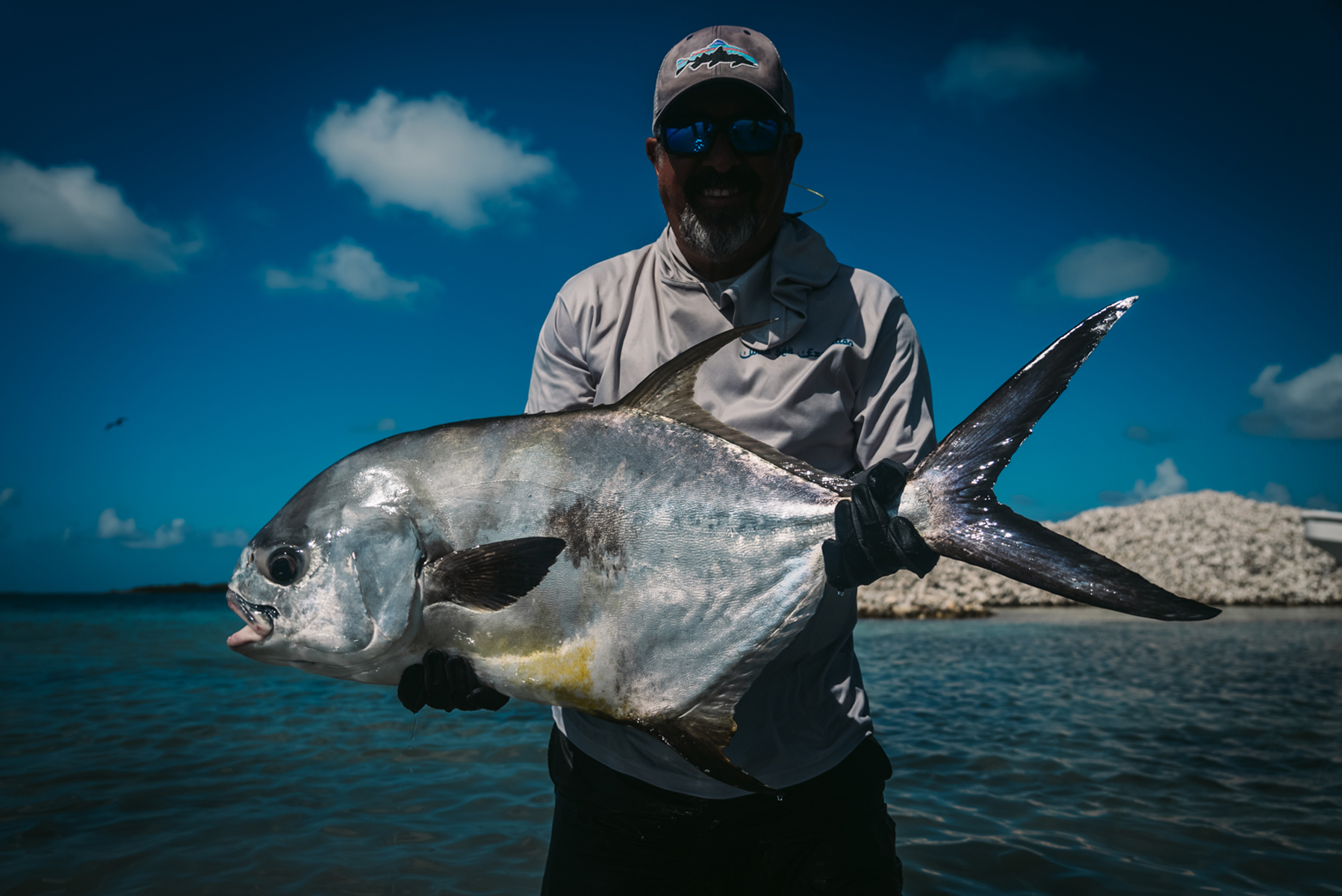
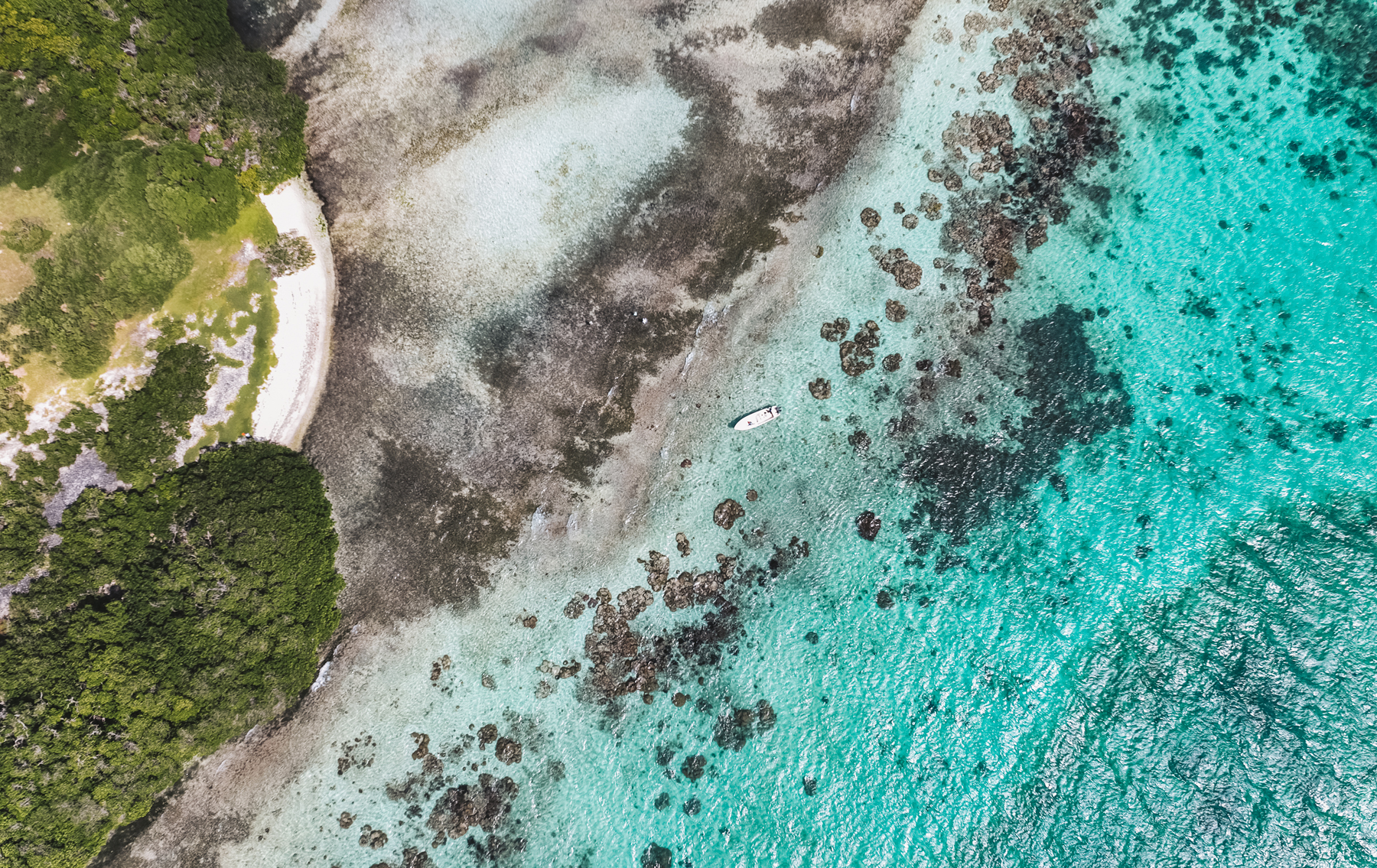
The setting itself is stunning. There are no cars on the main island of Gran Roque—you can walk barefoot on sandy roads without a care. The atmosphere is relaxed, rustic, and charming, like something out of a tropical daydream. Palm trees sway over pastel-colored buildings, and life moves at a slower pace.
From a travel standpoint, it’s relatively easy to reach. Flights from Caracas are short and scenic, and once you land, everything you need is within walking distance. If you choose the right lodge or guesthouse, you’ll find the service to be warm, professional, and attentive. It’s not expensive, especially when compared to high-end destinations in the Indian Ocean or Pacific, and it’s not overrun with tourists.
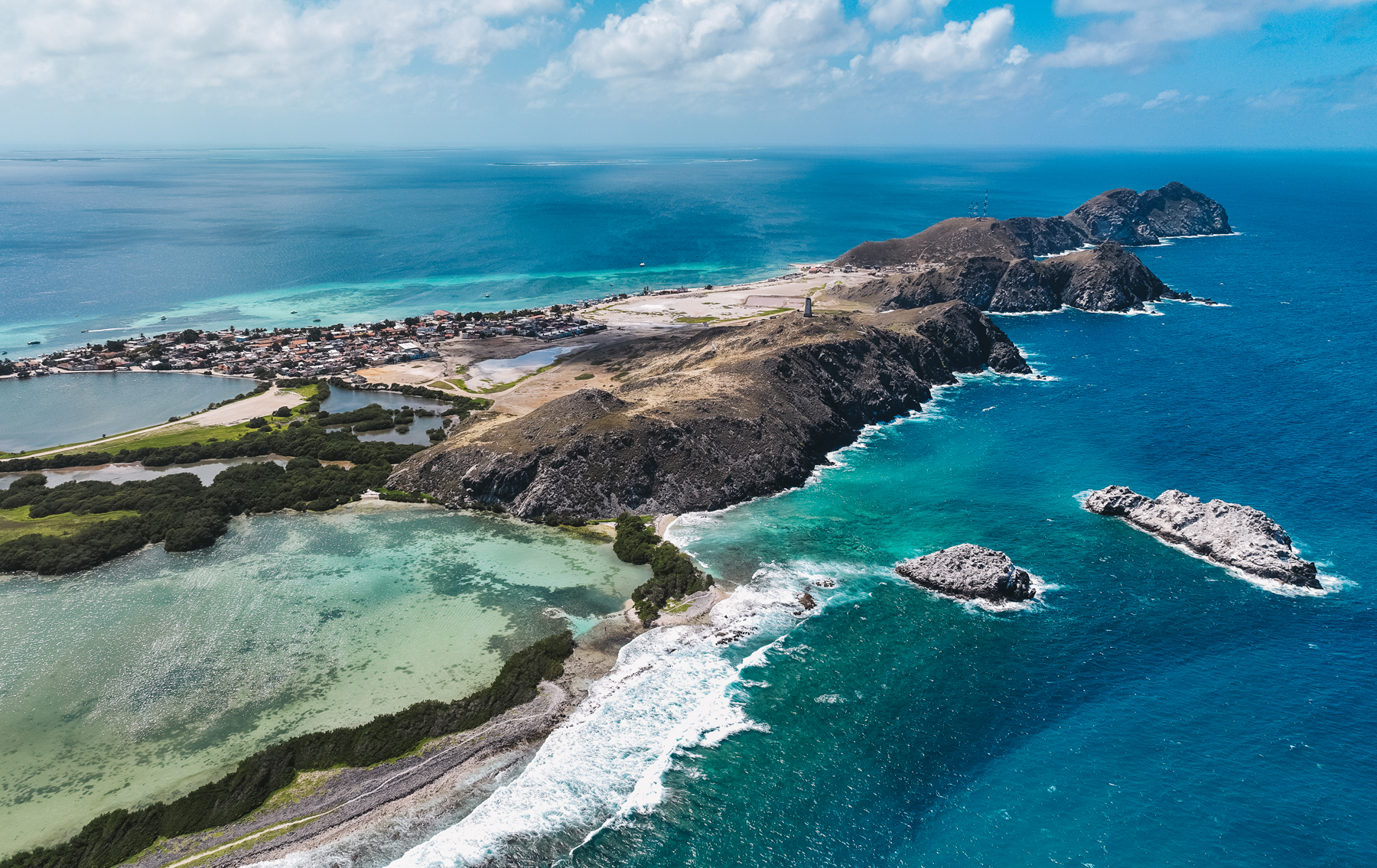
But it’s the fishing that truly sets Los Roques apart. I consider this one of the most complete saltwater fly fisheries in the world. You’ve got worldclass bonefishing—arguably among the best anywhere—for both beginners and seasoned anglers. But that’s just the start. The permit here are massive. You’ll find baby tarpon in the lagoons and mangroves, and sometimes even big tarpon around the bait-rich channels. Barracuda haunt the flats. Giant oceanic triggerfish tease and torment. And then there are the parrotfish—particularly the elusive and stunning rainbow and midnight varieties—which are, in my view, the ultimate fly rod challenge.
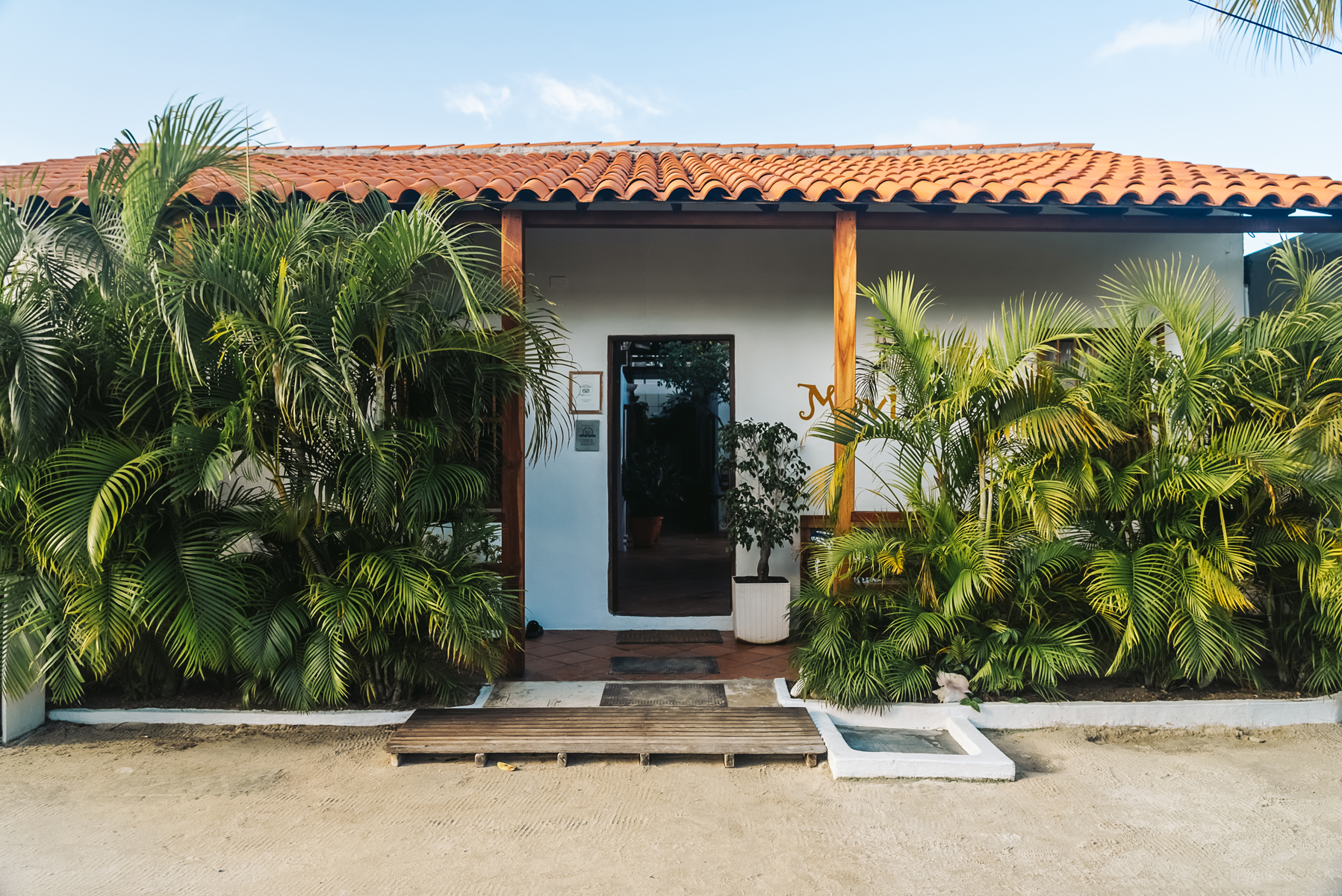
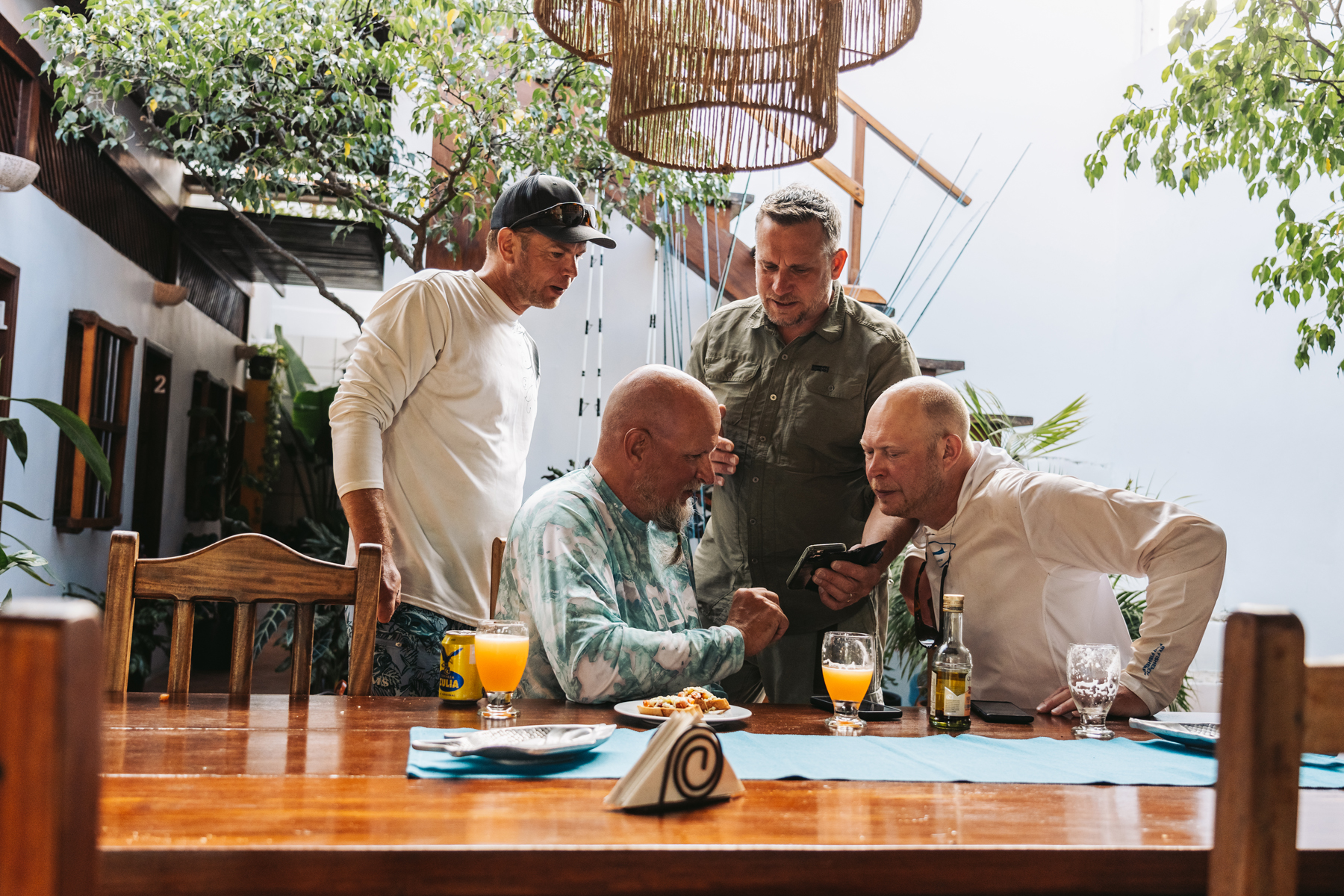
It’s the kind of place where you can tailor your trip to your mood and skill level. Want to catch 25 bonefish in a day and feel like a hero? No problem. Prefer to stalk spooky permit or target a single trophy parrotfish all day? That’s an option too. All this, at a fraction of the cost of more “elite” fisheries. That’s why we fell in love with it—and why we keep going back.
My fascination with remote, wild, and off-the-map locations is what originally led me to work in places like Sudan, Yemen, Djibouti, and Saudi Arabia. Those are rugged, demanding fisheries—beautiful but not for the faint of heart. So when I first started thinking about Los Roques a few years ago, it felt almost like a betrayal of my wild-fishing ethos. On paper, it looked traditional, maybe even too well-known. But something about it was calling to me. I had to see for myself what made it so special.
It was a great decision—one I’ve repeated almost every year since. Each trip reveals something new.
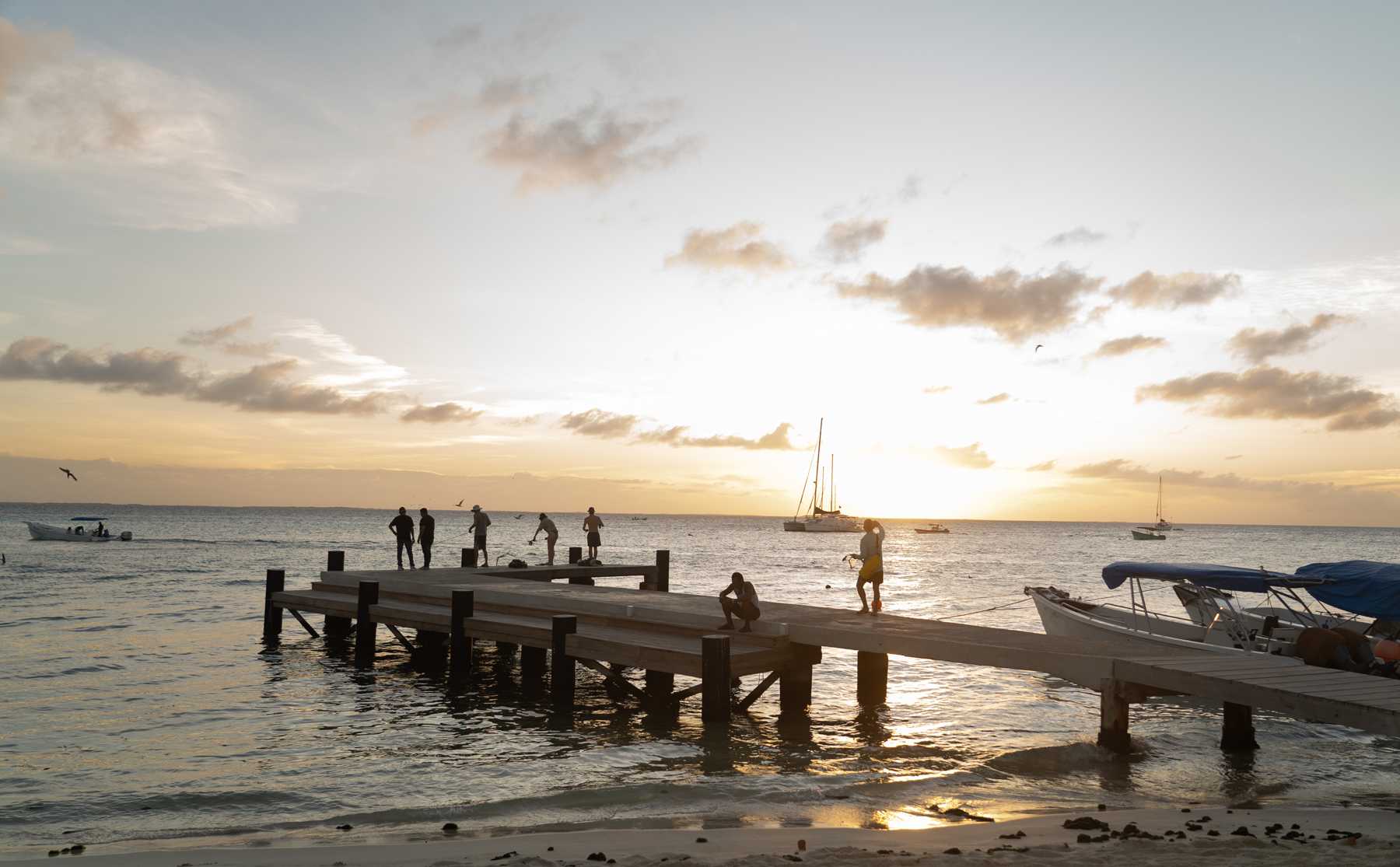
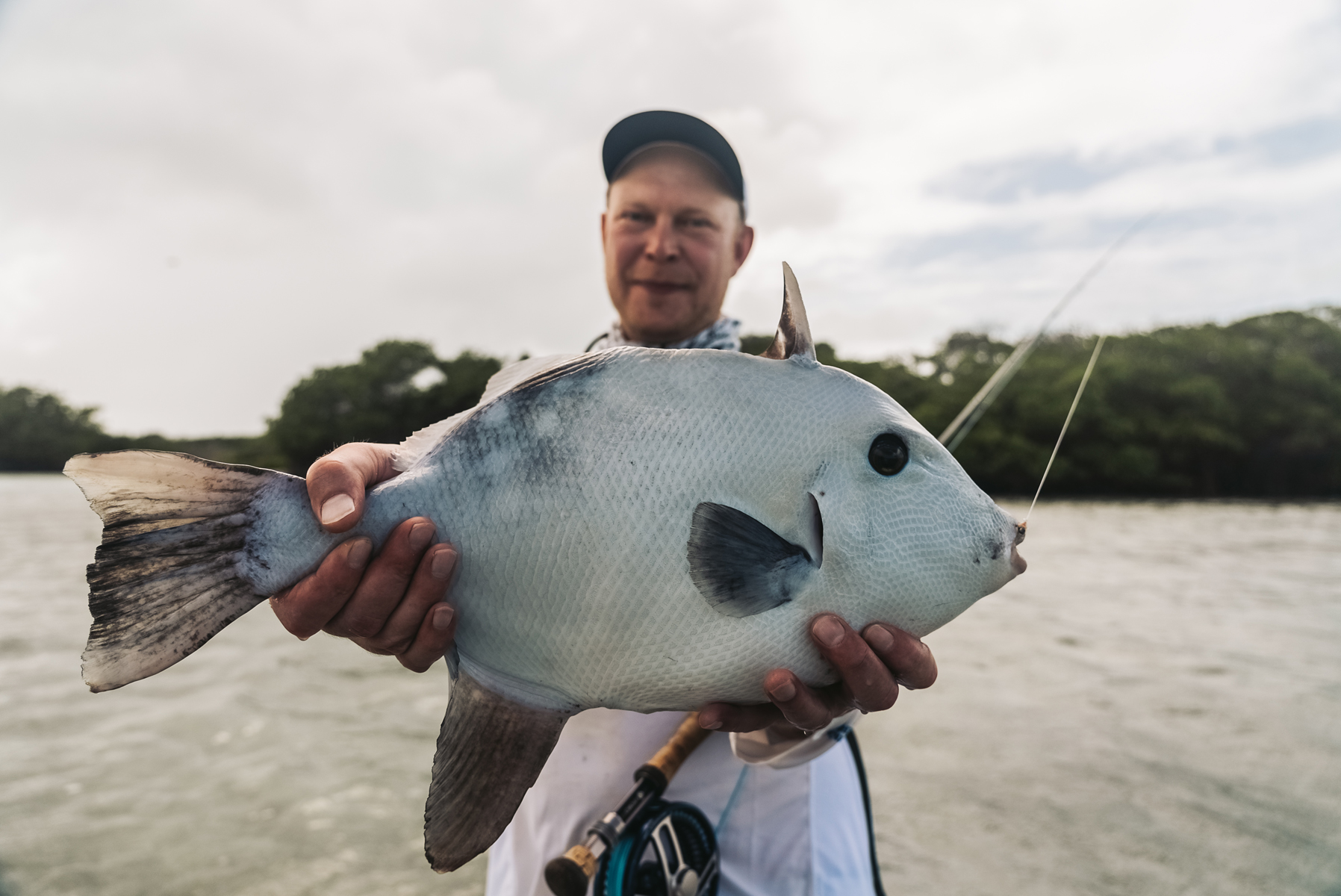
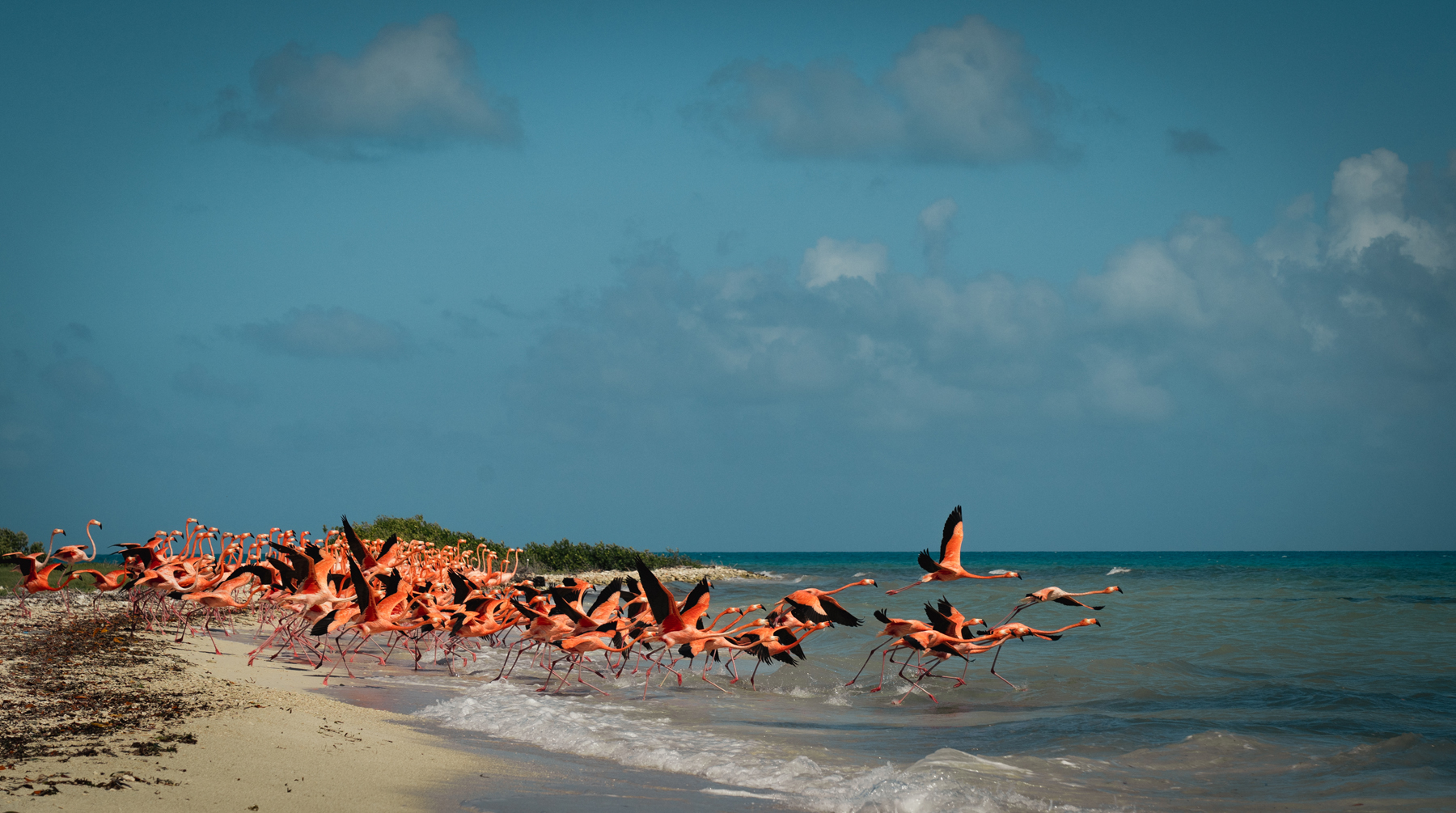
My friend Johan had been there twice before, mostly on DIY missions. DIY fishing is great for bonefish, but it really limits your access to the archipelago’s more exotic species. As we prepared for our joint trip, we made a pact: no bonefish. Not that we don’t love them, but we wanted to see what else this fishery could offer. For me, after ten years of Indian Ocean fishing, it was a totally fresh experience. I was buzzing with anticipation.
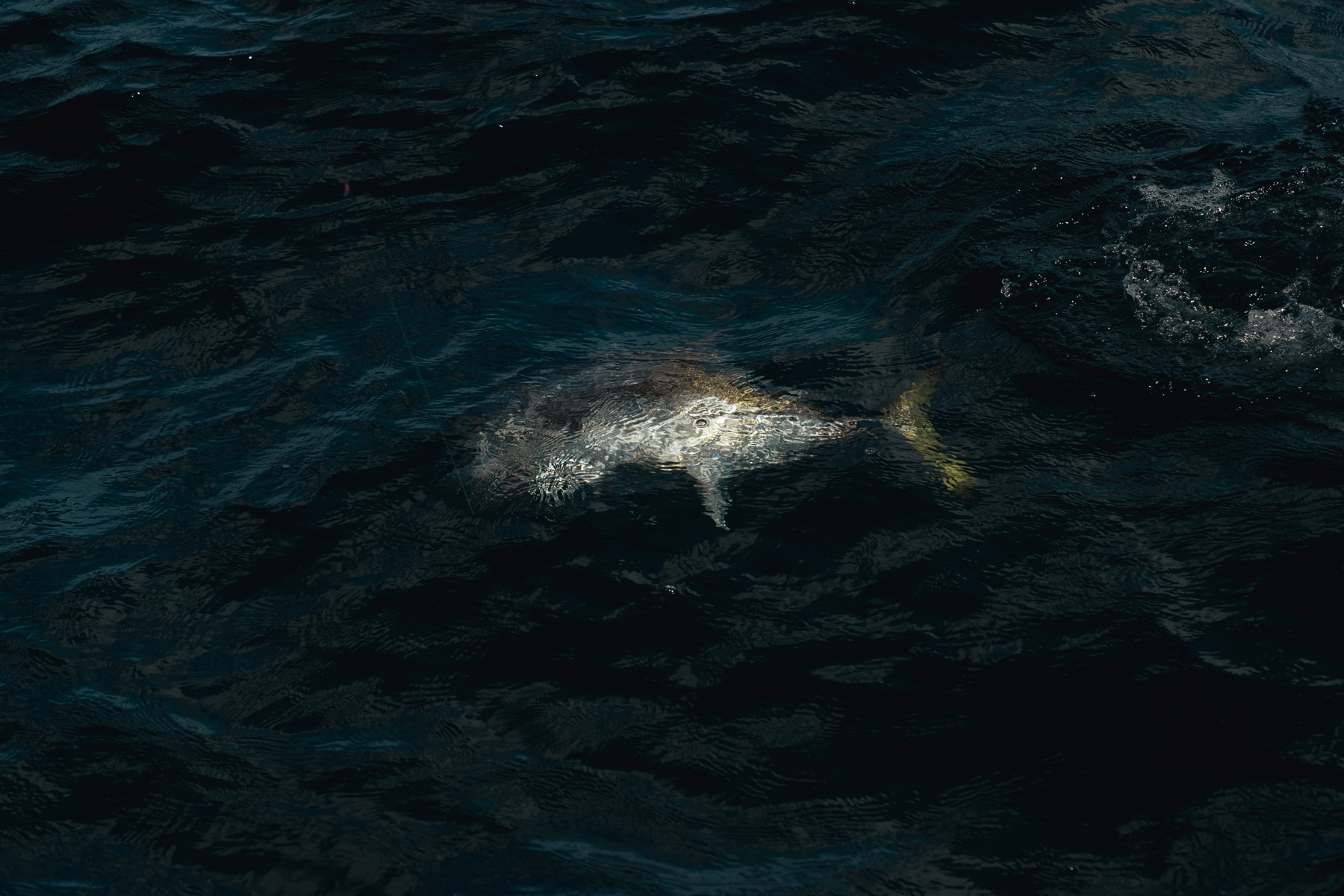
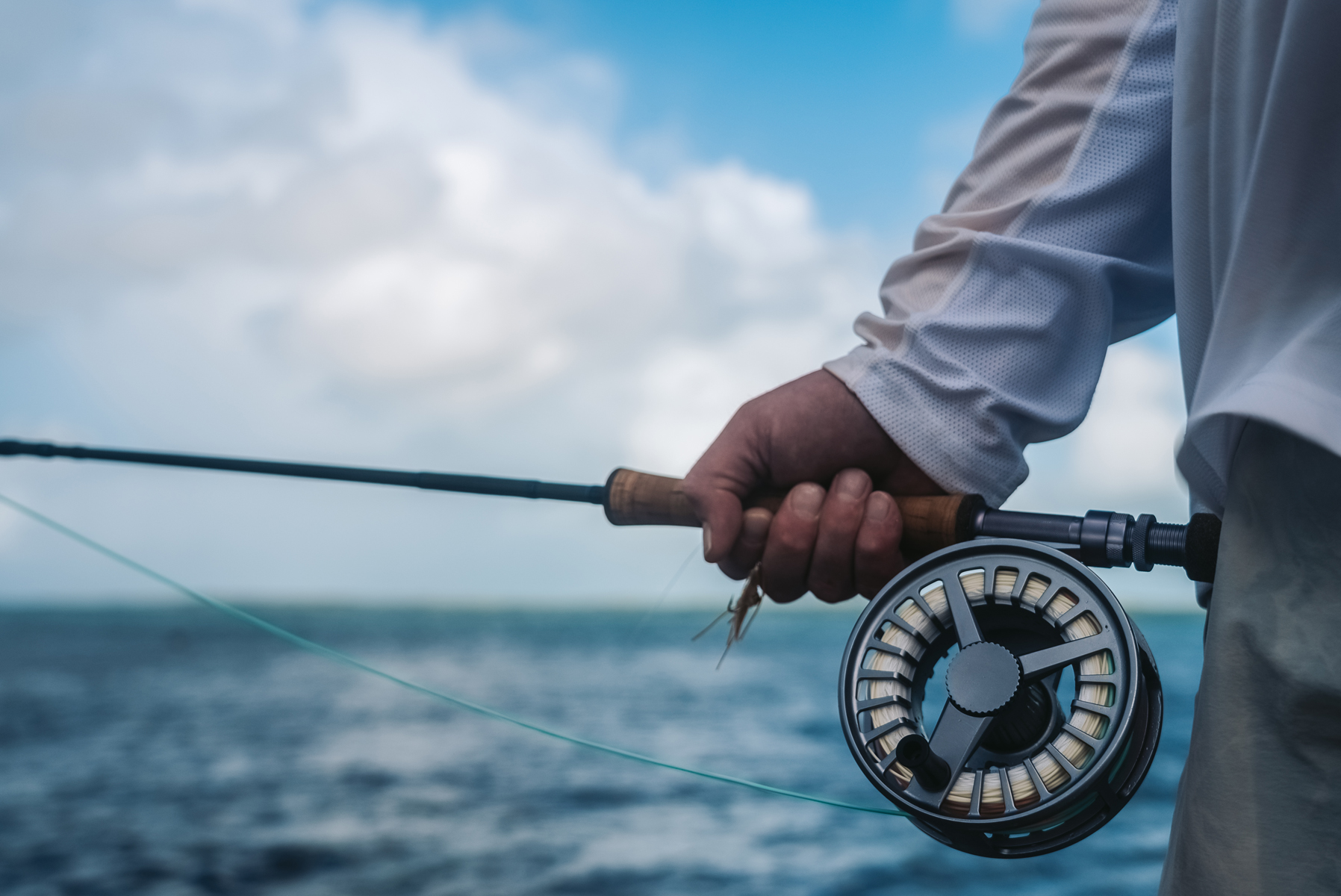
Bonefishing
Let’s start with the bones, though, because they’re the backbone of the fishery. Los Roques is renowned for its bonefish, and for good reason. You can experience some of the finest bonefishing in the world here. It’s not just about quantity—though you can certainly catch dozens of fish a day. It’s the variety of settings and techniques that make it special. You can blind cast to bait balls near beaches or wade skinny flats for tailing fish in ankle-deep water. Average size ranges from 3 to 5 pounds, but fish between 5 and 7 pounds are frequent, and double-digit bonefish are out there, typically in deeper areas. These giants often return to the same flats, so once you learn the terrain, you can revisit them trip after trip. One unique trait of Los Roques bonefish is their appetite for baitfish, which is why many anglers use Gummy Minnows and blind cast into schools. Personally, I prefer sight fishing in shallow water—it’s more technical and visually engaging. But it’s amazing to have both options.
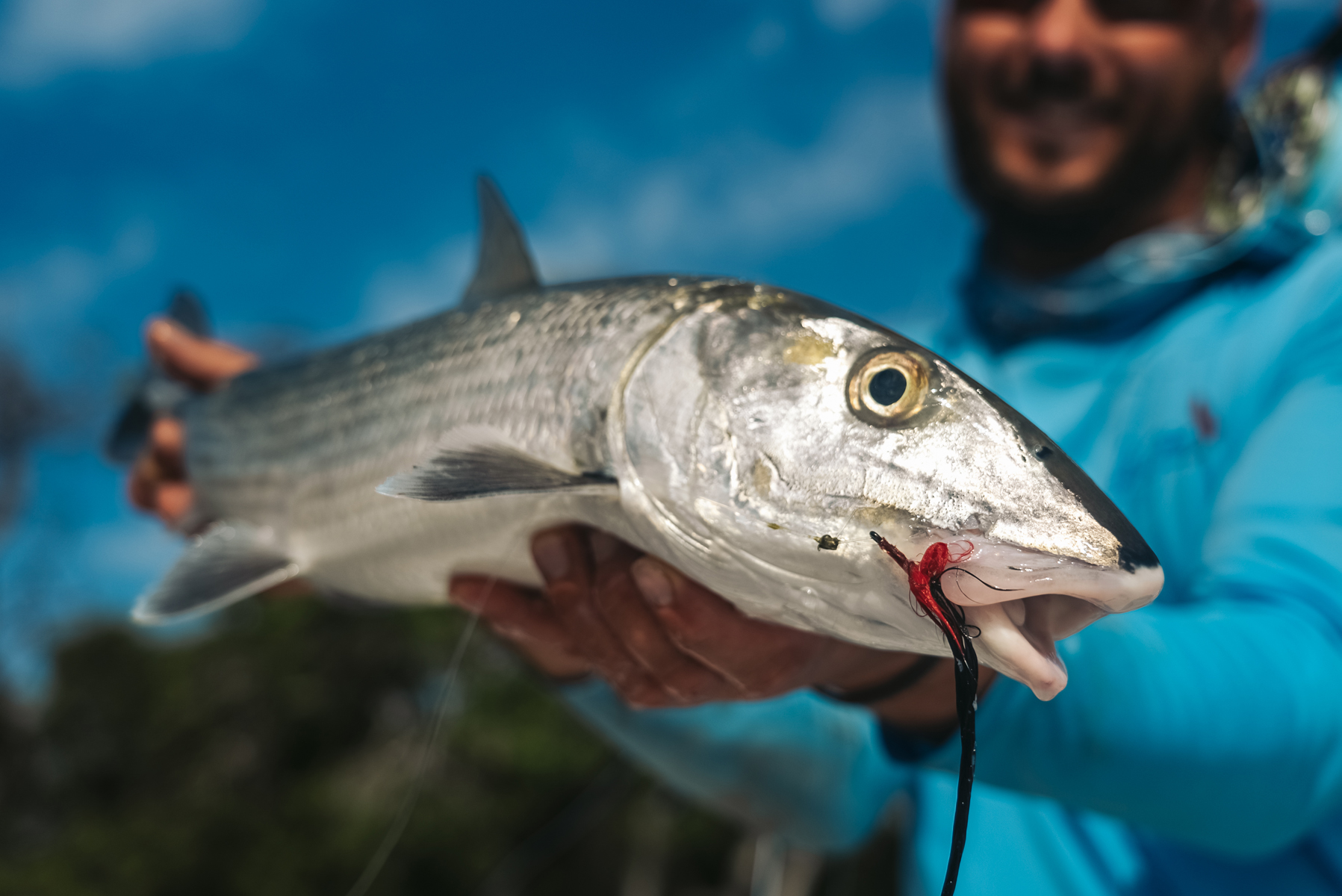
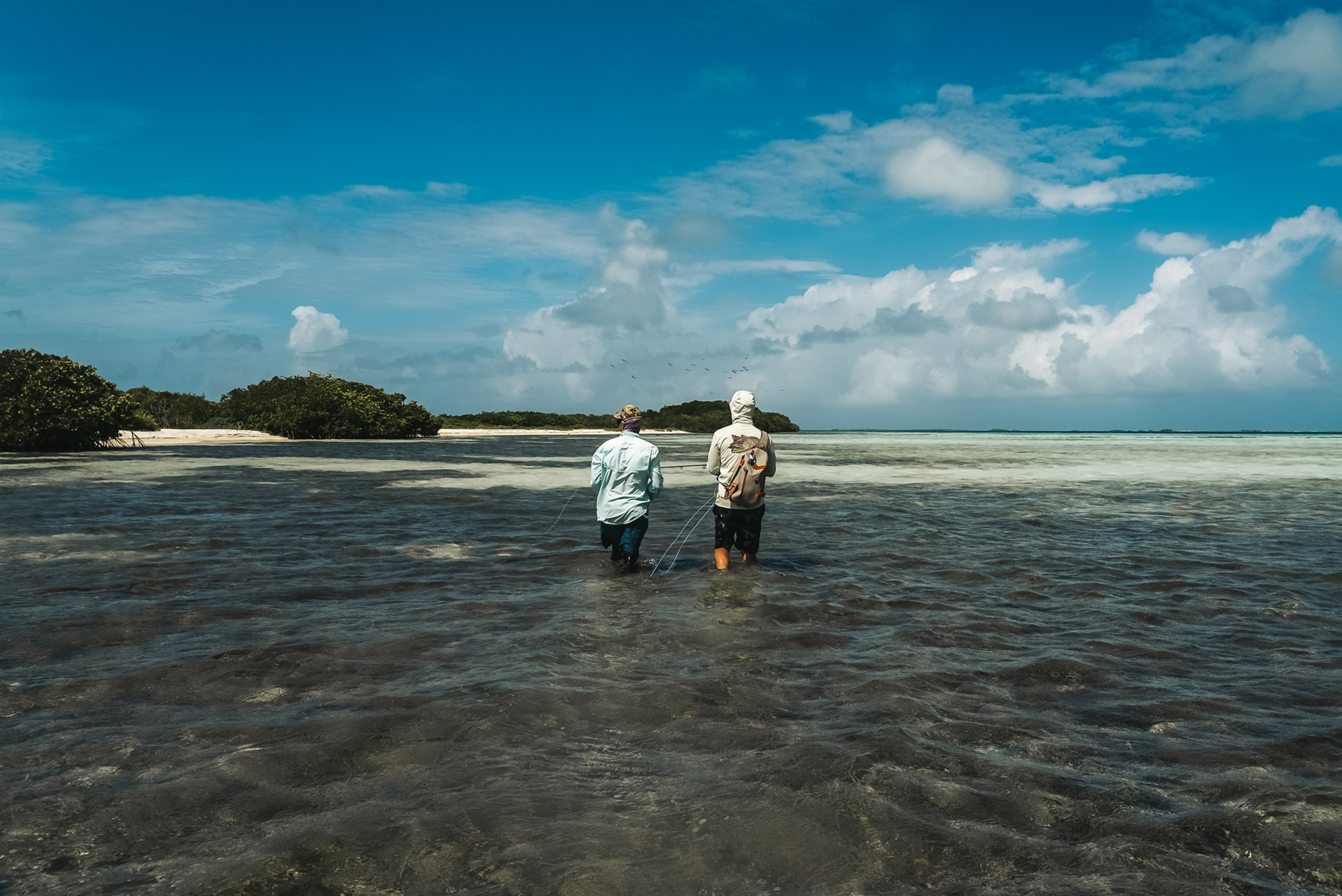
Permit fishing
Permit fishing is famously tough, and Los Roques is no exception. You could go an entire trip without hooking one. But if you do, it might be the fish of a lifetime. These are not small permit. Twenty-pound fish are routine here, and it’s not uncommon to see even bigger specimens.The approach is often from a skiff. Once a permit is spotted, you hop into the water and make a careful stalk. Presentation and patience are everything. It’s a heart-pounding pursuit, and even seeing a permit - let alone getting an eat - feels like a victory.
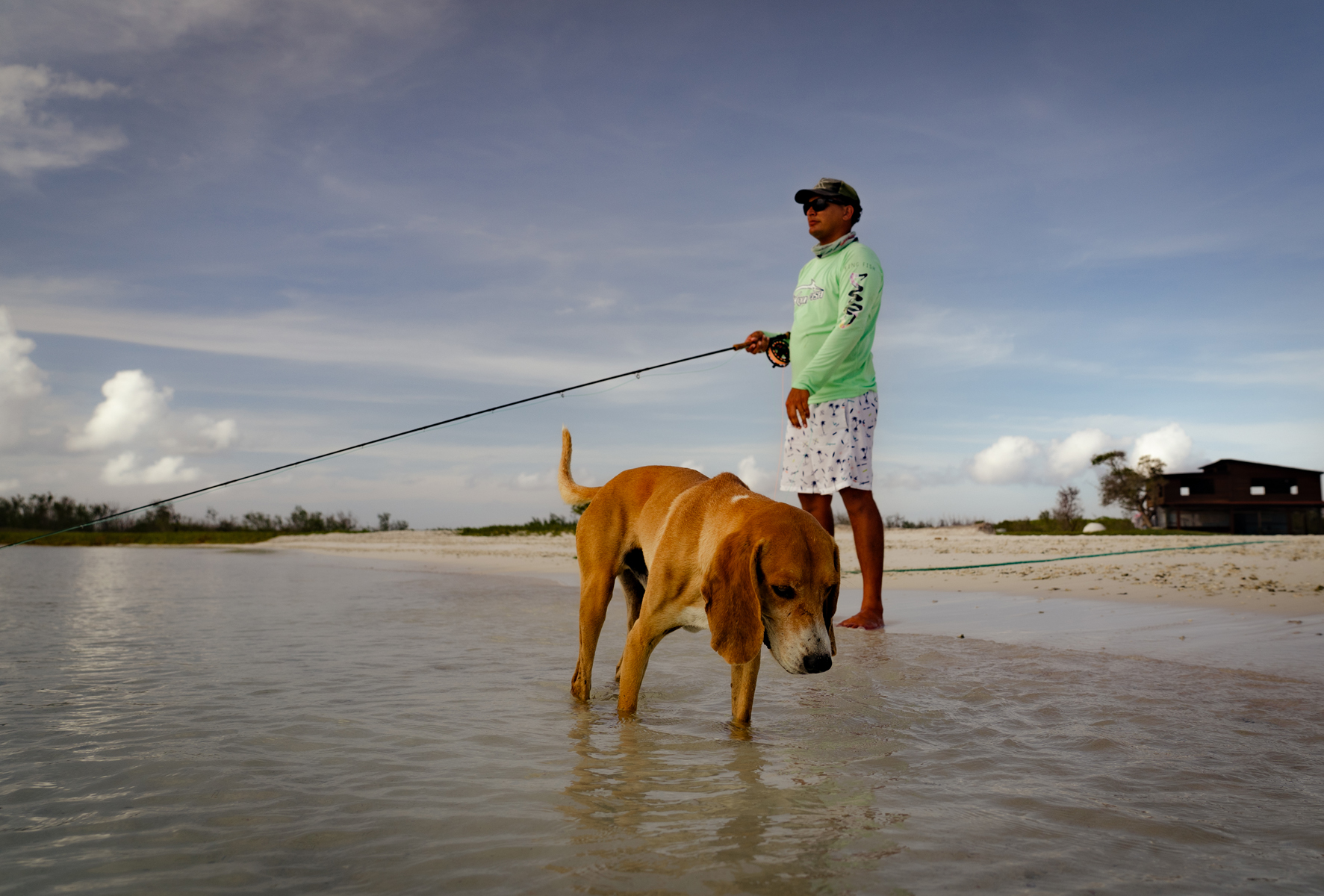
Tarpon fishing
Tarpon fishing in Los Roques is centred on baby tarpon found in mangroves and shallow lagoons. These fish are aggressive, acrobatic, and perfect for light tackle.
You can use a 6- or 7-weight rod and enjoy endless action with fish that leap, twist, and turn. Sometimes you can wade the lagoons, though the mud can get knee-deep, adding a comical but fun challenge to the experience.
“If you hit it right, you could connect with a fish in the 60-100 lb range”
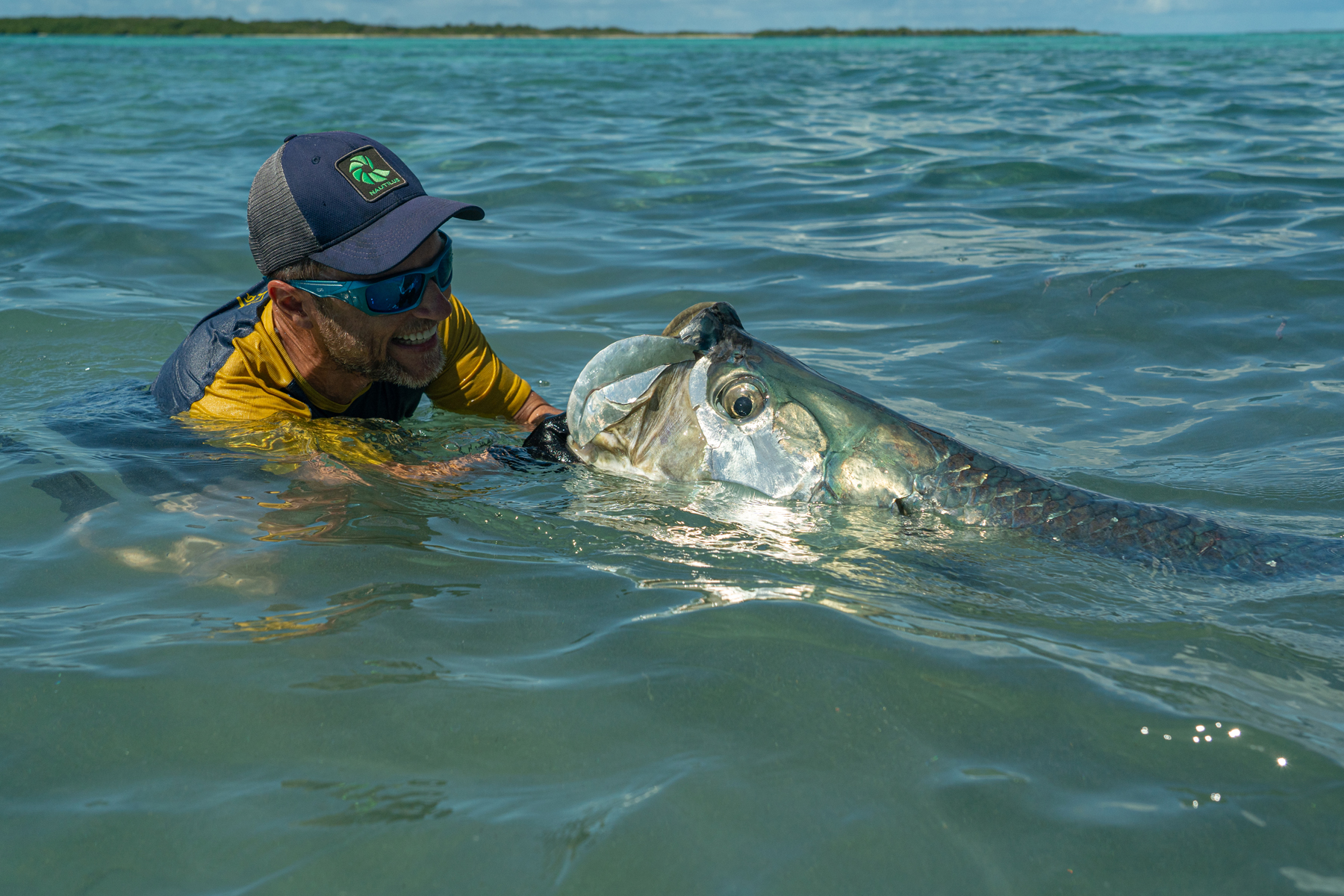
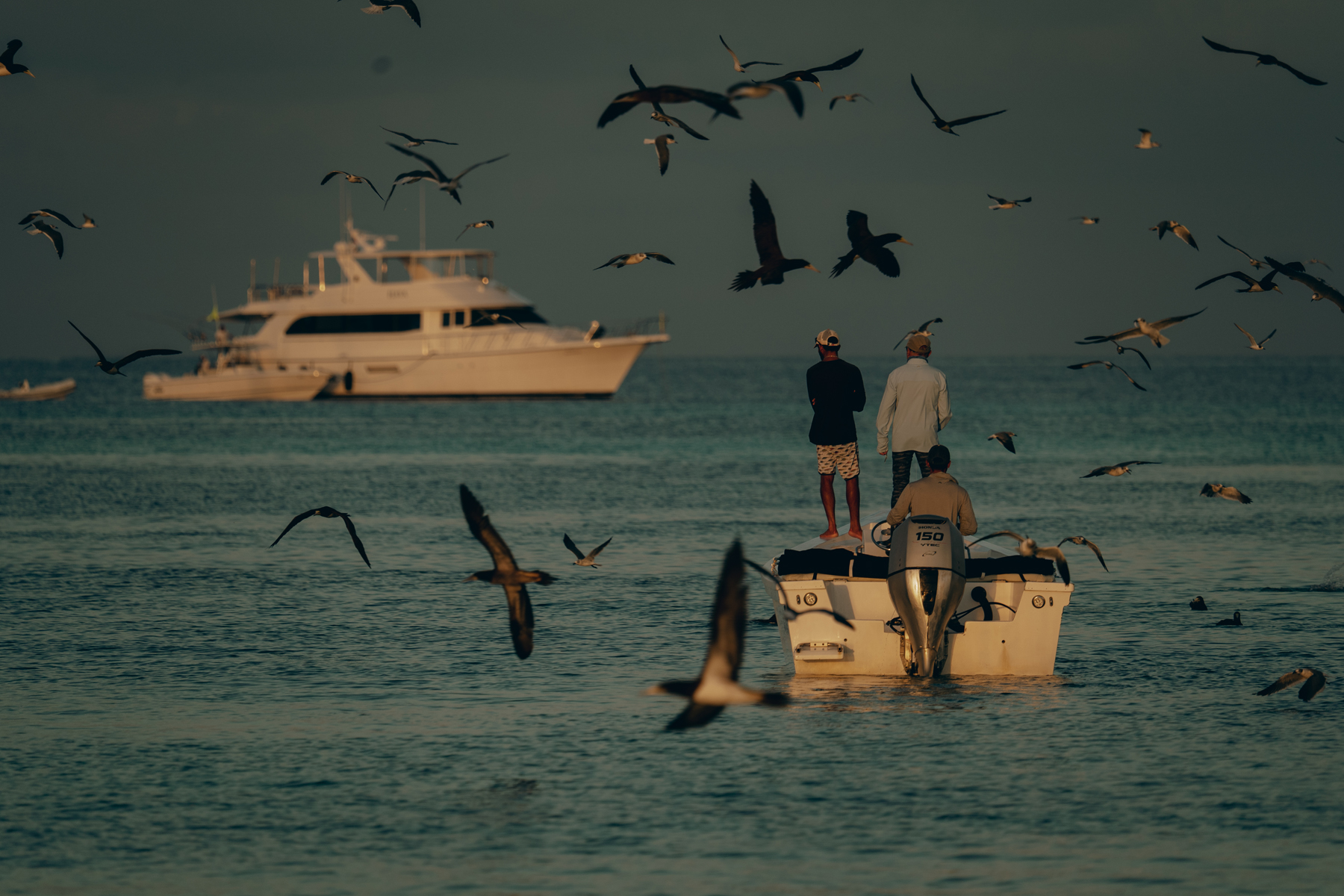
Larger tarpon are less predictable. Their presence depends on baitfish movements and seasonal factors, which have become more erratic in recent years. Still, if you hit it right, you could connect with a fish in the 60–100 lb range. It’s a gamble - but one worth taking.
Triggerfish
Los Roques triggerfish differ from their Indian Ocean cousins. They’re less fussy in some ways - either they eat or they don’t. But that doesn’t make them easy. They’ll track your fly, test it, back off, come back again. It’s like watching an underwater drama unfold.
What really stands out here is the size. Most triggers range from 1.5 to 3 kg, but fish up to 5 kg are not unusual. And we’ve seen monsters in the 7 to 9 kg range - absolute tanks that test your gear and skills to the limit. Landing one of these giants is a rare feat and a major badge of honour.
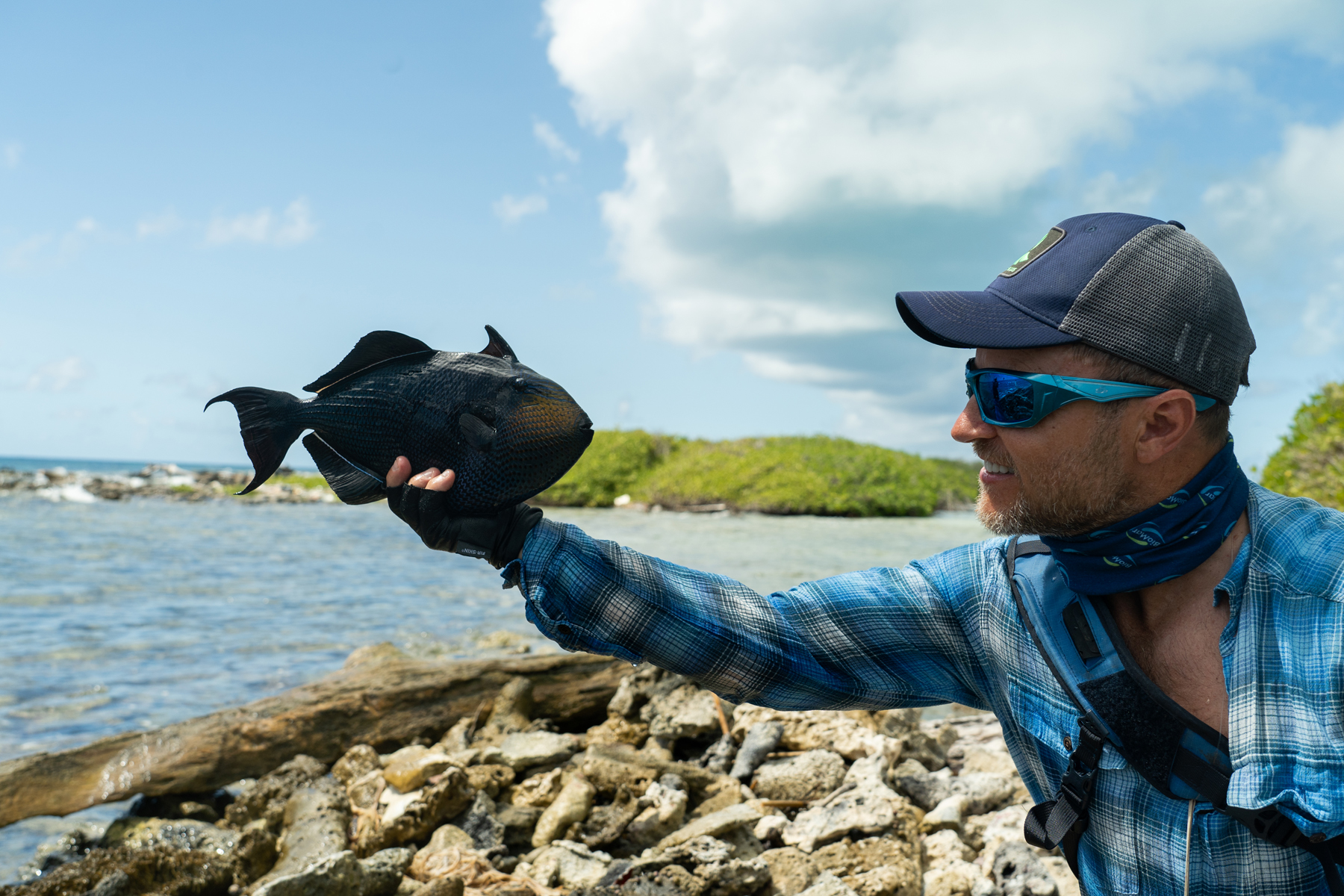
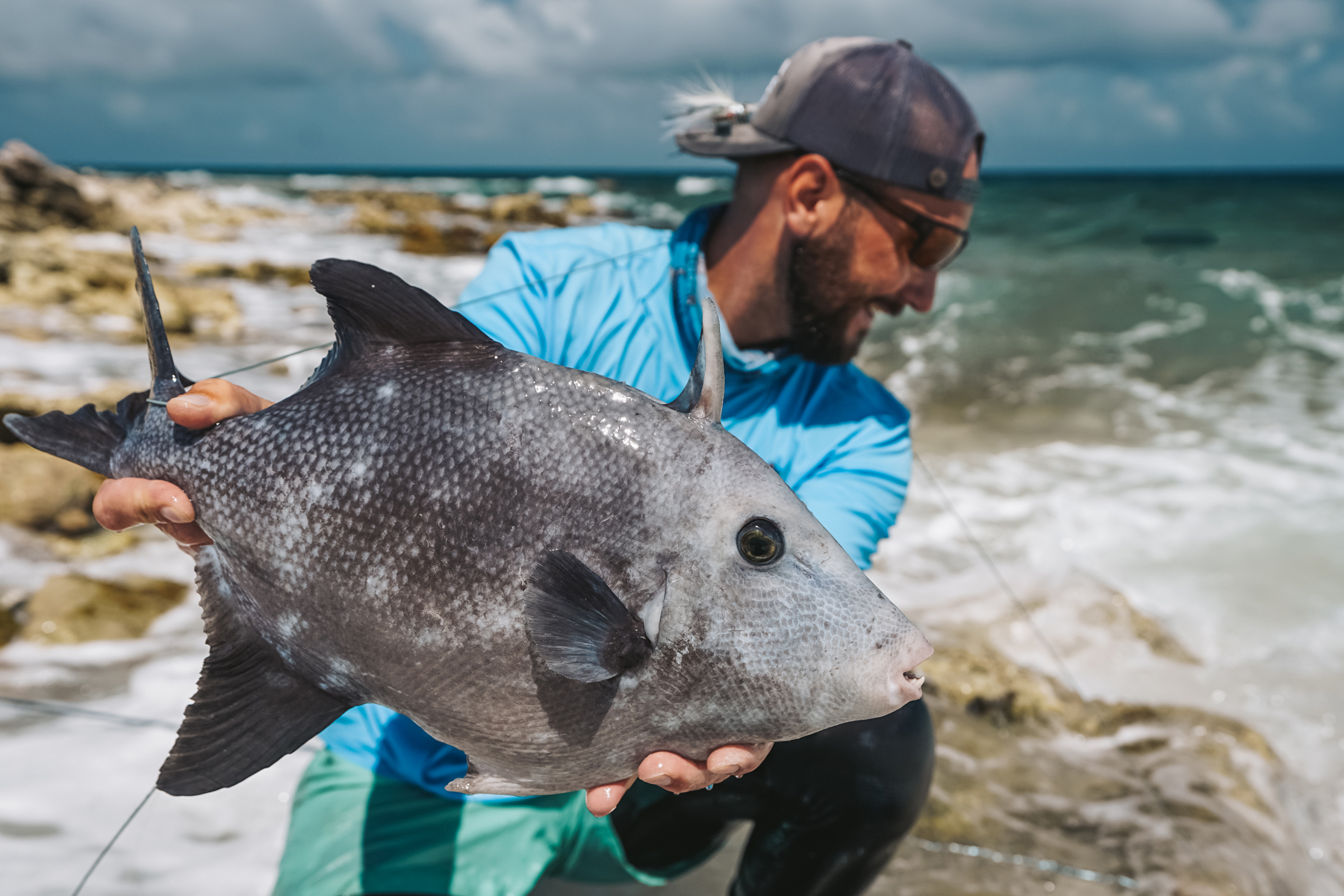
Parrotfish
Now for the real addiction: parrotfish. These creatures are, in my view, the ultimate fly rod challenge in Los Roques. They’re big, muscular, wary, and once hooked, they explode with nuclear energy.
Catching one feels like winning the lottery. Holding one—its vibrant colours shimmering in the sun—is an unforgettable moment.

They’re more tide-dependent and less aggressive than their Indian Ocean counterparts. By aggressive, I mean reactive to flies. They’re not predators, so they don’t attack in the traditional sense. That makes presentation and timing critical.
Local guides often target large schools on specific flats. This shotgun approach works—but I prefer the sniper method. I look for singles or small groups and isolate a target. It’s more personal, more satisfying. But it’s also more likely to end in failure. And that’s okay—because it’s the pursuit that matters.
Once hooked, parrotfish fight dirty. They’ll reef you, bend your hook, bite you off with their beaks. They’re like underwater bulldozers with teeth. If you don’t land one on your first trip, you’ll probably be booking your return before you’ve even left the island. A special mention goes to the midnight parrotfish - a deep-black beauty with turquoise highlights.
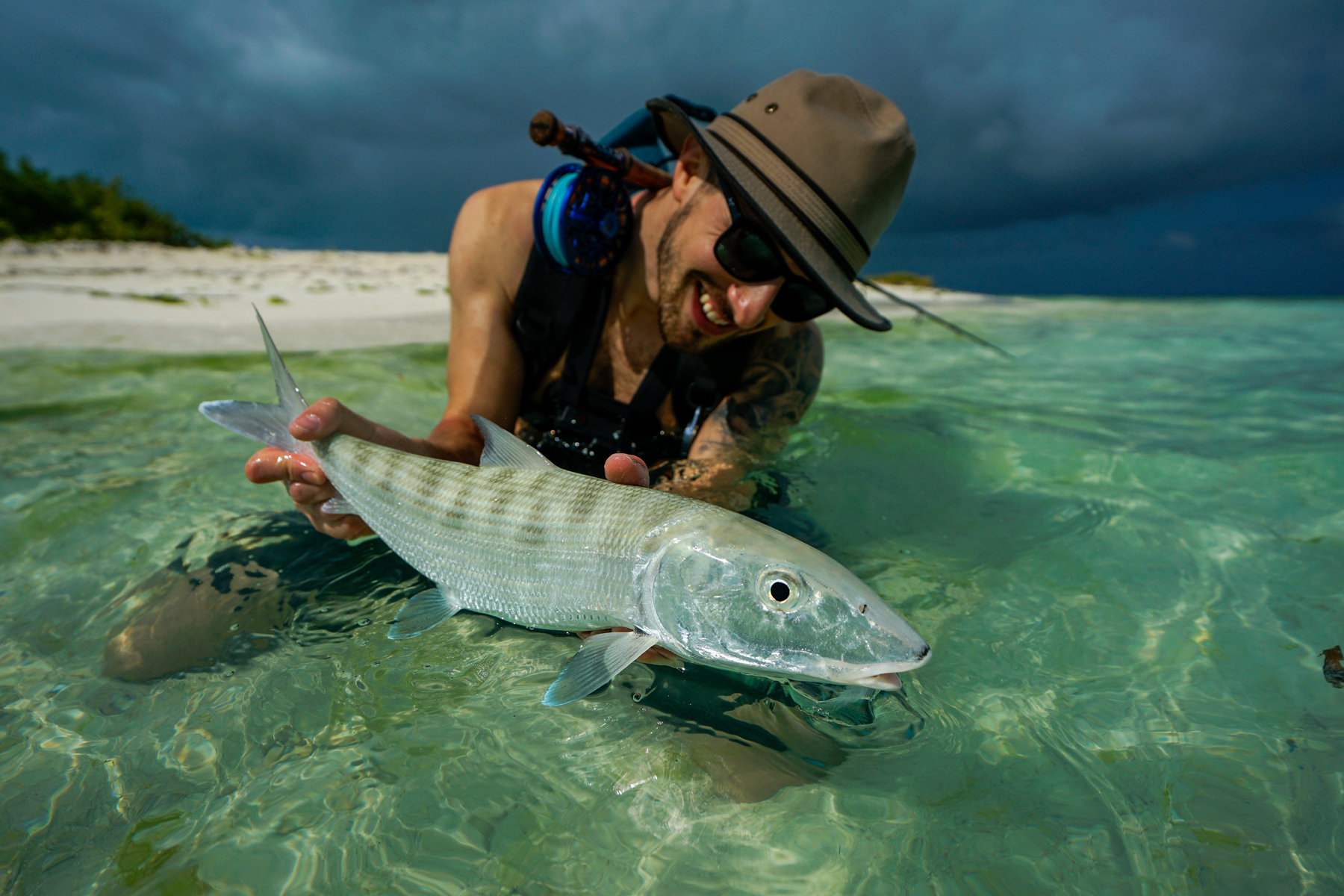
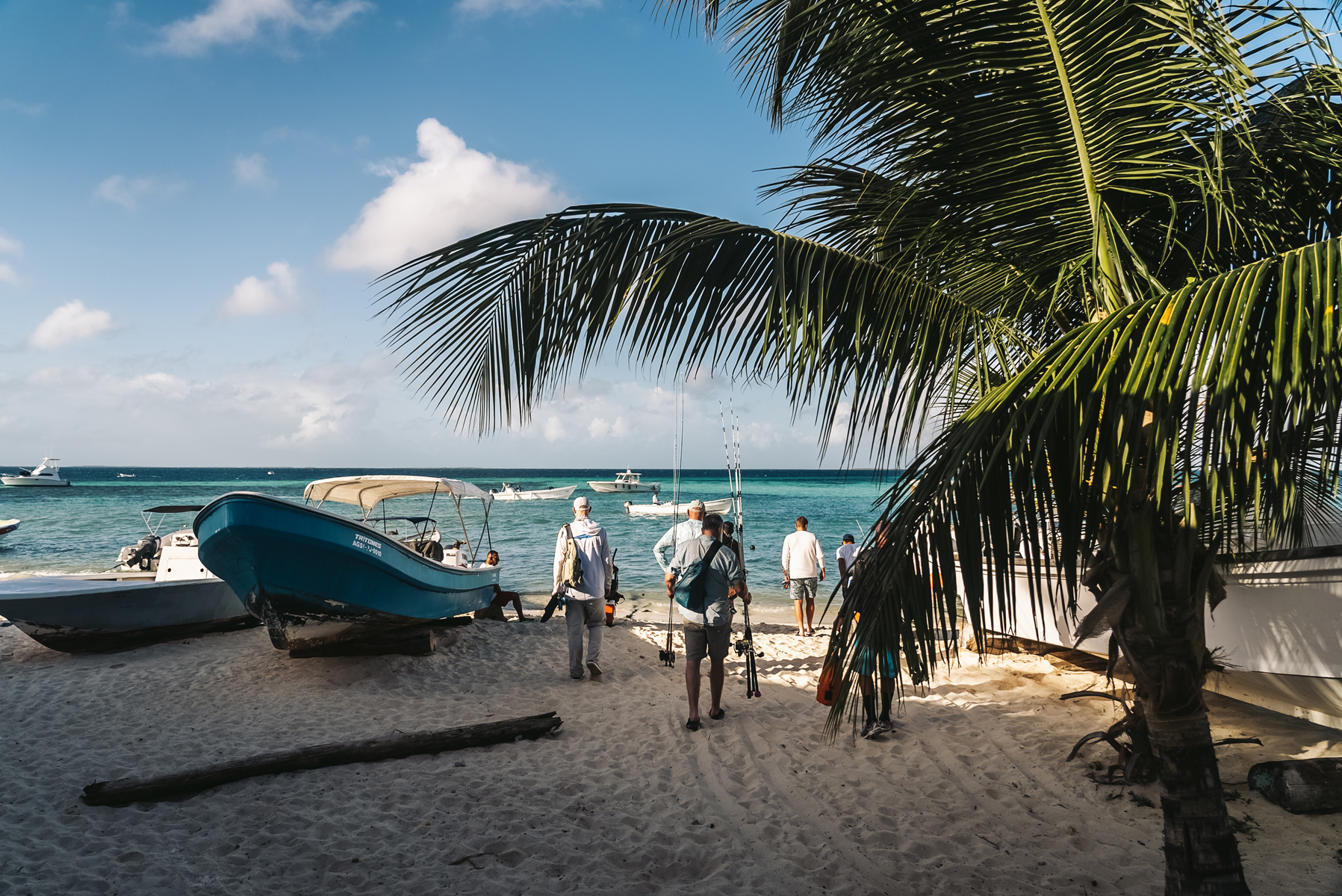
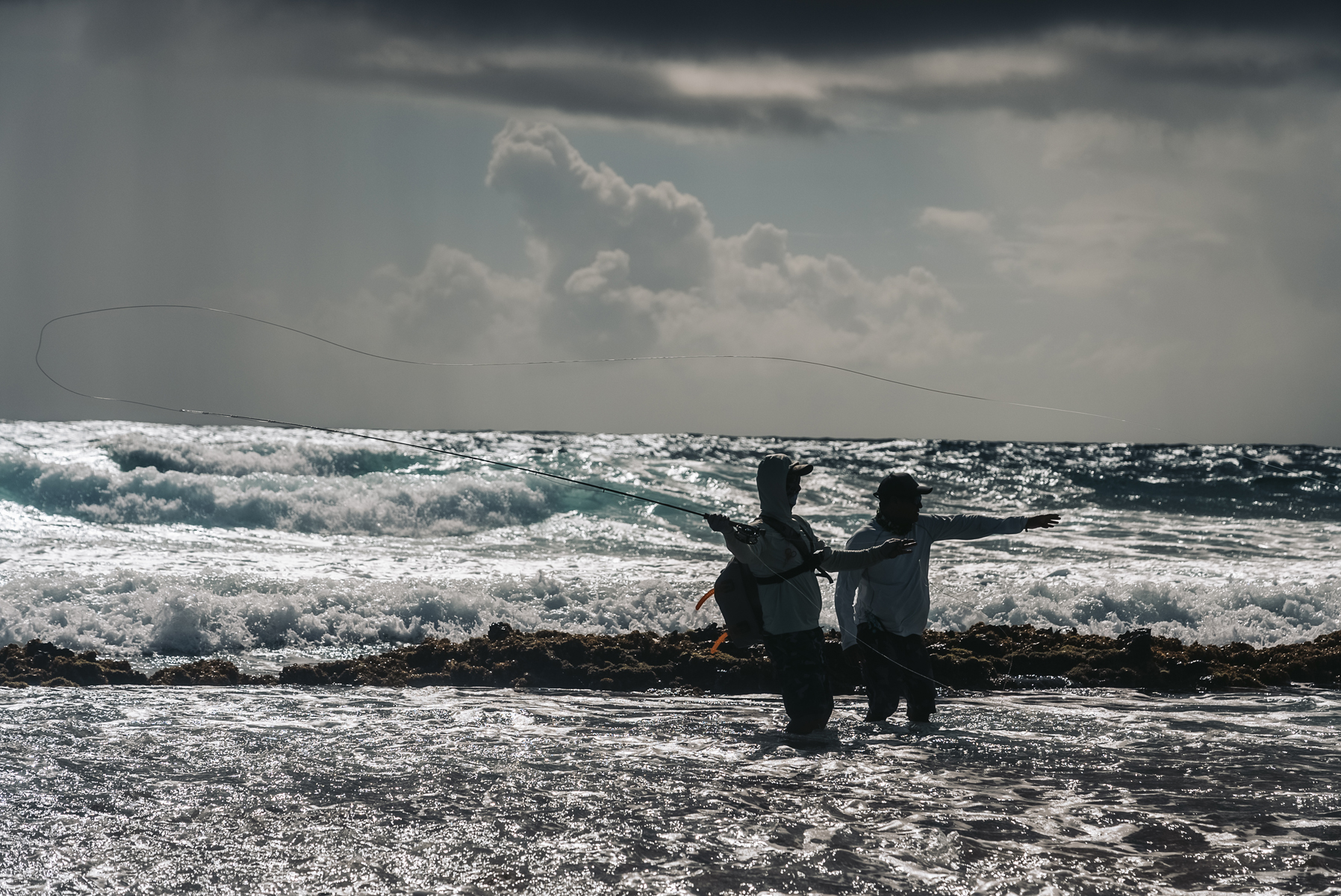
Stunning, elusive, and almost impossible to catch. No one has officially landed one on the fly yet. Johan has hooked two and landed none. They’re curious and will follow your fly but seldom commit. That makes them the holy grail.
A paradise for those who seek both beauty and purpose in every cast
And that’s the essence of Los Roques: a place where a beginner can achieve their dream of landing their first bonefish, and a veteran angler can chase an unlanded legend. It’s a fishery that challenges and inspires, in equal measure. This is Los Roques—a paradise for those who seek both beauty and purpose in every cast.
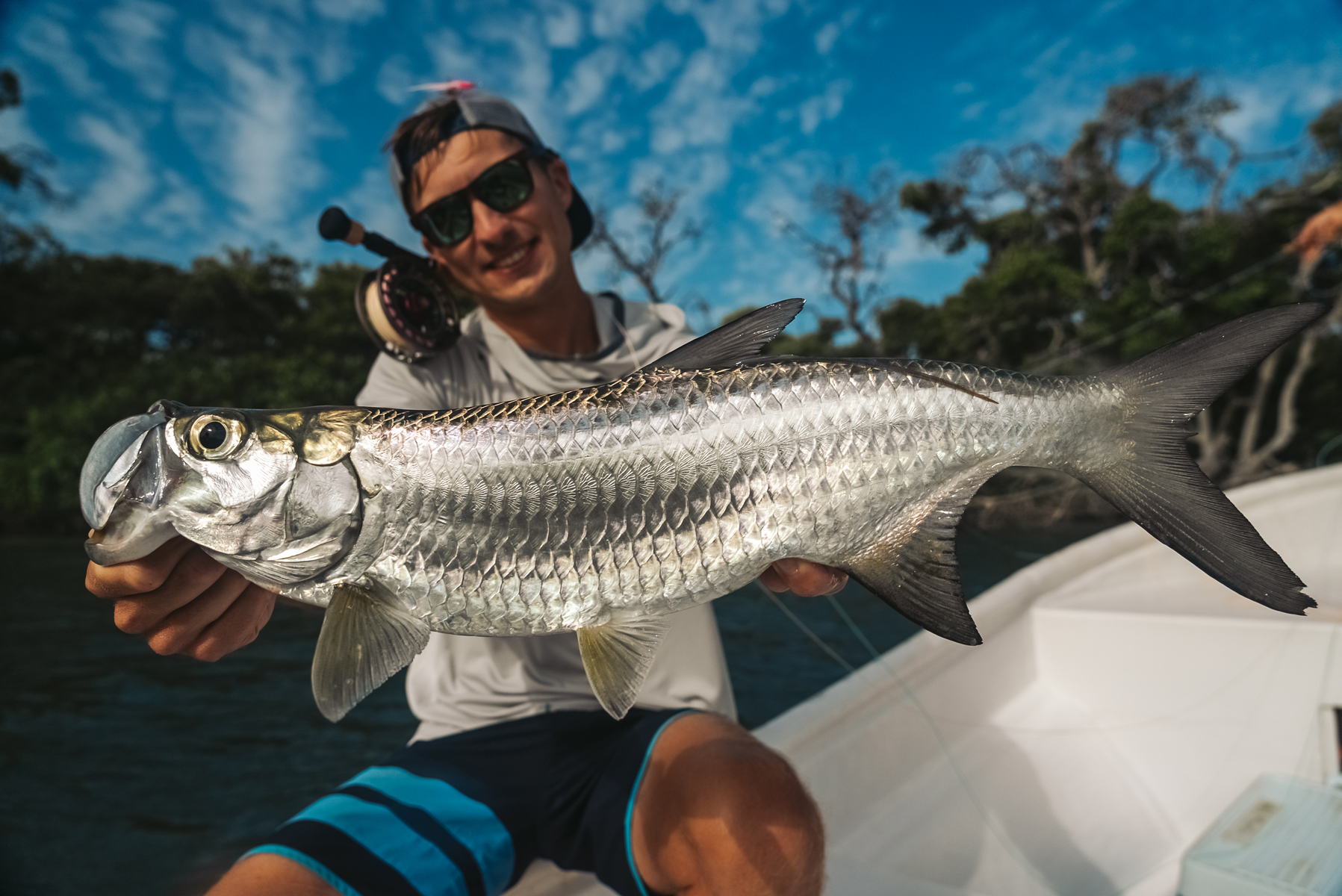
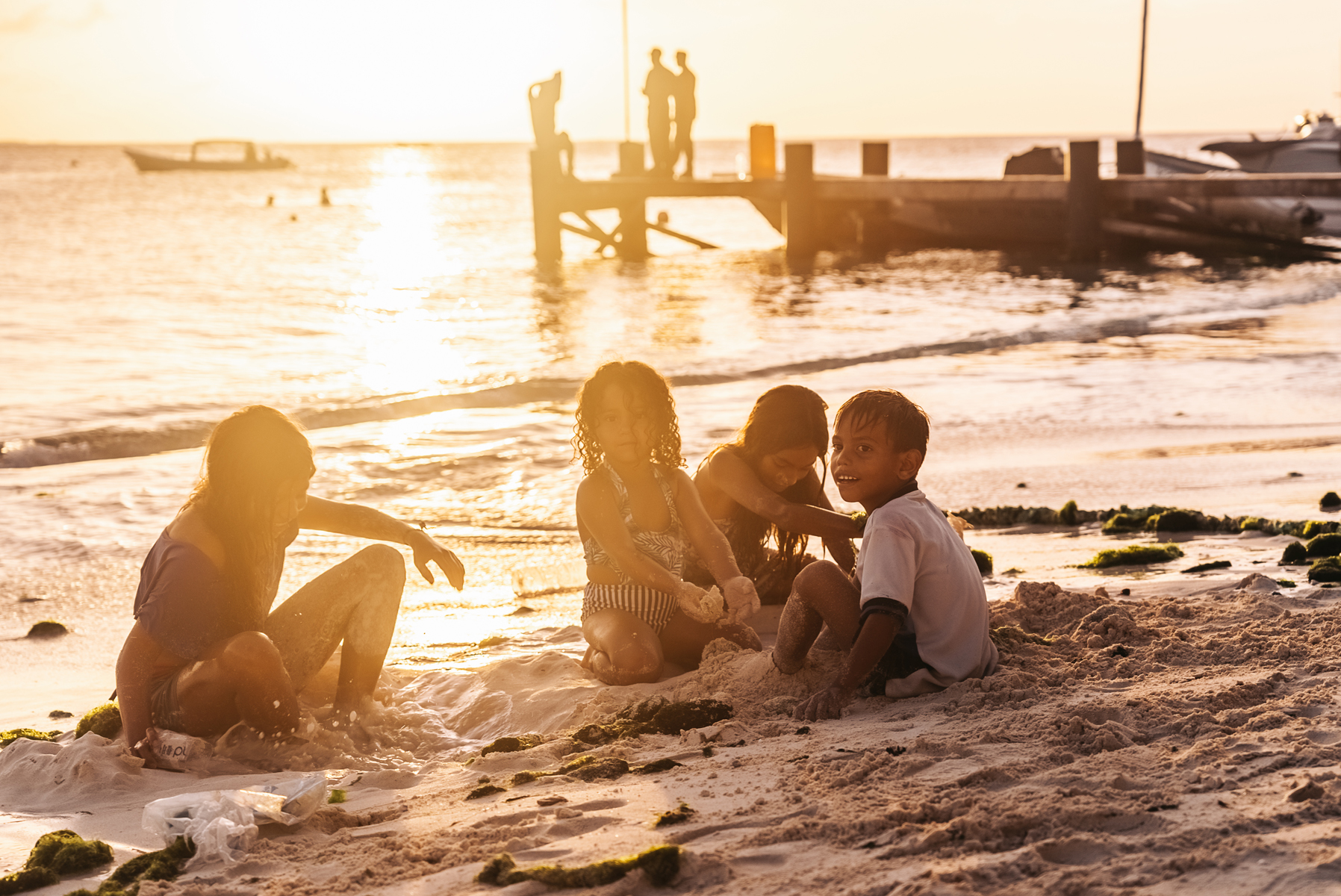
Travel Considerations
Los Roques is accessible via a 30-minute flight from Caracas, Venezuela. Gran Roque serves as the main hub, with accommodations ranging from basic guesthouses to luxury lodges. It’s advisable to book well in advance, especially during peak seasons.
The (slightly) cooler months of October to March tend to produce higher numbers of the large tarpon, although if the baitfish are in, these huge tarpon will be there whatever the season. Smaller tarpon are always found in the mangrove lagoons.The months between March to September are the best for bonefishing, the water is lower and fishing for bonefish in super skinny water is at its best.
Thanks to its location to the extreme south of the Caribbean, this archipelago is off the track of the hurricanes that wreak so much havoc to other islands at certain times of the year.
No vaccinations are required for a trip to Los Roques. And depending on your nationality, you may not need to apply for a travel visa. (Check online prior to your travels)
For more information, please refer to: www.wildseaexpedition.com/the-los-roques-archipelago









